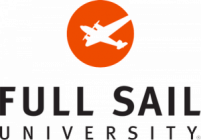
35+ Years of Shaping Entertainment and Pop Culture - From Oscar and GRAMMY-winners, to animators, to creative directors and entrepreneurs, our graduates make significant contributions to their industries. Learn More.
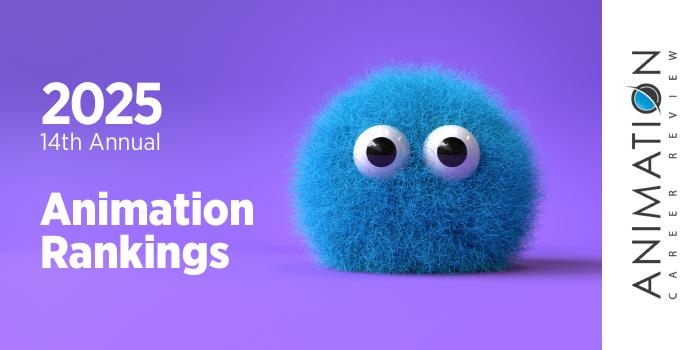
| Ranking | School | State | % |
|---|---|---|---|
| 1 | California Institute of the Arts | California | Top 1% |
| 2 | Savannah College of Art and Design | Georgia | Top 1% |
| 3 | Ringling College of Art and Design | Florida | Top 2% |
| 4 | University of Southern California | California | Top 2% |
| 5 | School of Visual Arts | New York | Top 3% |
| 6 | University of California, Los Angeles | California | Top 3% |
| 7 | Rhode Island School of Design | Rhode Island | Top 4% |
| 8 | Pratt Institute | New York | Top 4% |
| 9 | Gnomon | California | Top 5% |
| 10 | New York University | New York | Top 5% |
| 11 | Brigham Young University | Utah | Top 6% |
| 12 | Rochester Institute of Technology | New York | Top 6% |
| 13 | DePaul University | Illinois | Top 7% |
| 14 | ArtCenter College of Design | California | Top 7% |
| 15 | Carnegie Mellon University | Pennsylvania | Top 8% |
| 16 | Academy of Art University | California | Top 8% |
| 17 | Texas A&M University | Texas | Top 9% |
| 18 | Full Sail University | Florida | Top 9% |
| 19 | The Ohio State University | Ohio | Top 10% |
| 20 | School of the Art Institute of Chicago | Illinois | Top 10% |
| 21 | University of Central Florida | Florida | Top 15% |
| 22 | Otis College of Art and Design | California | Top 15% |
| 23 | University of Texas at Dallas | Texas | Top 15% |
| 24 | California College of the Arts | California | Top 15% |
| 25 | San Jose State University | California | Top 15% |
| 26 | Massachusetts College of Art and Design | Massachusetts | Top 15% |
| 27 | Purdue University | Indiana | Top 15% |
| 28 | Minneapolis College of Art and Design | Minnesota | Top 15% |
| 29 | Arizona State University | Arizona | Top 15% |
| 30 | California State University | California | Top 15% |
| 31 | Columbus College of Art and Design | Ohio | Top 20% |
| 32 | Columbia College Chicago | Illinois | Top 20% |
| 33 | The New School's Parsons School of Design | New York | Top 20% |
| 34 | Florida State University | Florida | Top 20% |
| 35 | DigiPen | Washington | Top 20% |
| 36 | Maryland Institute College of Art | Maryland | Top 20% |
| 37 | Clemson University | South Carolina | Top 20% |
| 38 | University of Florida | Florida | Top 20% |
| 39 | California State University, Long Beach | California | Top 20% |
| 40 | University of Colorado, Denver | Colorado | Top 20% |
| 41 | College for Creative Studies | Michigan | Top 20% |
| 42 | Cleveland Institute of Art | Ohio | Top 25% |
| 43 | University of North Carolina School of the Arts | North Carolina | Top 25% |
| 44 | Rocky Mountain College of Art and Design | Colorado | Top 25% |
| 45 | Laguna College of Art and Design | California | Top 25% |
| 46 | Drexel University | Pennsylvania | Top 25% |
| 47 | New Mexico State University | New Mexico | Top 25% |
| 48 | Kansas City Art Institute | Missouri | Top 25% |
| 49 | Middle Tennessee State University | Tennessee | Top 25% |
| 50 | Loyola Marymount University | California | Top 25% |
Our 2025 list -our fourteenth annual- of the Top 50 Animation School Programs in the US.
For an explanation of ranking criteria, click here.

California Institute of the Arts (CalArts) provides programs that combine a liberal arts curriculum and mentoring, with immersive coursework in film and video. Housed in CalArts’ largest department—the School of Film/Video (F/V), all programs allow students to explore multiple modes of moving image. Examples include animation, live-action, and documentary filmmaking.
Other program features include courses led exclusively by working artists, filmmakers, and technicians; famous alumni such as Tim Burton (Beetlejuice, Edward Scissorhands, Ed Wood), John Lasseter (Cars, Toy Story), and Chris Buck (Frozen); interactions with accomplished animators and filmmakers through the visiting artist series; field trips to demonstrations and screenings; and small class sizes.
The School of F/V at CalArts also provides opportunities to study abroad in places such as Berlin, Paris, and Prague; paid internships through the Academy Internship Program (established by the Academy of Motion Picture Arts and Sciences); participation in the Bijou Festival at CalArts (attended by professionals in the animation, film, and television industries); collaborations with The Museum of Modern Art (MoMA), the UCLA Film and Television Archive, and the Montreal International Festival of New Cinema, among others; and the opportunity to present works at Sundance, Centre Pompidou in Paris, and New York Film Festival.
Specific School of F/V programs for animators include the Experimental Animation BFA and MFA, and a Character Animation BFA.
The Experimental Animation BFA and MFA programs at CalArts focus on animation approaches, techniques, and processes such as 2D animation, motion capture, performance animation, programming, digital production, stop motion, and installation. Independent study, seminars, lectures, and workshops supplement courses.
Course examples for BFA students include Animation Production; Motion Controlled Animated Camera; Animal Anima; Absolute Animation Workshop; Sound for Experimental Animation I-II; Hybrid Imaging; Motion and Meaning; Experimental Characters; Animating Virtual Worlds in Real-Time; Loop Loop; Drawn Techniques for the Experimental Animator; Cartoon Logic; and Creating Augmented Reality Experiences.
To enhance the curriculum, Experimental Animation BFA students may add a minor, pursue one of several interdisciplinary programs, or both. A popular option is the Digital Arts minor. This 18-unit program allows students to develop skills in areas such as computer programming, digital media and web development, video editing, and digital sound production.
The CalArts Experimental Animation BFA program takes four years to complete. A final project and the creation of a professional portfolio are the culminating experiences for the program.
The Experimental Animation MFA at California Institute of the Arts is a three-year, residency track program that begins with a first-year project. Designed for students seeking leadership roles in studio production, those interested in launching their own studios, and individuals who would like to become educators, this interdisciplinary, terminal degree program provides opportunities to select courses from art, dance, theater, and music to reach the required 60 credits.
At least six graduate-level history/theory credits must be completed in residence at CalArts. To fulfill these requirements, students will take Seminar in Animation History; History of Experimental Animation; and one additional approved history/theory course. Other course examples include Digital Workflow for Animators; Drawn Techniques for the Experimental Animator; First Year Shorts; Introduction to Cinema 4D; Sound for Experimental Animation; Stop Motion Basics; and Interactive Media.
The Experimental Animation MFA at CalArts culminates with a thesis, completed across 12 credit hours of seminar courses. This includes Experimental Animation Thesis Concept Seminar (two courses/three credits each) and Experimental Animation Thesis Production Seminar (two courses/three credits each).
The Character Animation BFA at CalArts is a four-year program that prepares students to work in traditional, computer graphic (CG), and independent animation. Course examples include 2D Character Animation I-III; Digital Methods; Animation Layout; Life Drawing I-II; CG Foundation; Acting for Animators; CG Character Modeling; Drawn Techniques for the Experimental Animator; CG Special Effects for Animated Films; Cinematography; Color as Storytelling; and Character Animation I-IV.
Like Experimental BFA students, Character Animation students may enhance the program by pursuing one of several interdisciplinary programs, adding a minor, or both.
The Character Animation BFA at California Institute of the Arts culminates with an individual short and professional portfolio.
Graduates of the creative programs at California Institute of the Arts have found success in animation, film and video, advertising, music, acting, graphic design, theater, and more. Examples of companies that hire CalArts graduates include Pixar, NBCUniversal, Disney, Illumination, Sony Animation, Netflix, Warner Bros., Capitol Records, Google, and Apple.
Many CalArts alumni have also gone on to launch their own studios and other entertainment businesses. Examples include Handbuilt Studio, Clay and Kelsy Instruments, Minimal Audio, and Scale Navigator.
California Institute of the Arts was established in 1961 after the consolidation of the Los Angeles Conservatory of Music (est. 1883) and the Chouinard Art Institute (est. 1921). With the financial backing of Walt Disney, the newly formed CalArts incorporated all areas of the visual and performing arts. Today, the school serves 1,520 students enrolled in more than 70 degree programs across the School of Art; the School of Critical Studies; the School of Film/Video; Herb Alpert School of Music at CalArts; Sharon Disney Lund School of Dance; and the School of Theater.
California Institute of the Arts also houses the Roy and Edna Disney/CalArts Theater (REDCAT), located in the Walt Disney Concert Hall complex in Los Angeles, and the award-winning Community Arts Partnership (CAP) with community organizations and public schools across LA County. Established in 1990, CAP has the support of The Getty Foundation, Sony Pictures, and the National Endowment of the Arts.
CalArts is accredited by the WASC Senior College and University Commission (WSCUC). The school is also one of approximately 83 accredited institutional members of the National Association of Schools of Dance (NASD).
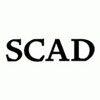
Savannah College of Art and Design (SCAD) operates the world’s largest university-run film festival. With attendance exceeding 63,000 annually, the eight-day Savannah Film Festival has welcomed Academy Award-winning guest speakers such as Mahershala Ali, Holly Hunter, and Jeremy Irons, along with directors such as Oliver Stone and Christopher Miller. All SCAD students may participate in the festival, which also features workshops, lectures, and networking opportunities.
SCAD students also have access to nearly one million square feet of dedicated film and television production space including Savannah Film Studios—one of the largest university film studios in the U.S.; the 65,000 square feet SCAD Digital Media Center; Lucas Theatre for the Arts; and the 82,000 square feet SCAD Museum of Art. Built on a historical site, the museum hosts exhibitions, screenings in an onsite theater, and master classes with industry professionals and visiting artists.
Savannah College of Art and Design is also home to the School of Animation and Motion. Serving approximately 1,985 students, the school’s Animation program has BFA, MA, and MFA pathways. In addition to access to all SCAD facilities, the Animation program provides 24/7 access to more than 800 networked computers; instruction by artists from major studios and productions such as Ice Age, Pocahontas, and The Lion King; and the opportunity to participate in SCAD Study Abroad in Lacoste, France.
The Animation BFA program at Savannah College of Art and Design provides the opportunity to enroll in Gradpath@SCAD. This unique program allows students to earn a BFA/MA or BFA/MFA at an accelerated pace. Students in the BFA/MA program may complete this combined degree in less than four years. The BFA/MFA can be completed in five years or less.
The 180 credit-hour Animation BFA is available at SCAD’s Atlanta and Savannah campuses. The major curriculum for the program consists of 80 credit hours, including concentrations in 2D Animation; 3D Character Animation; Technical Animation; and Storytelling and Concept Development. Students will take 15 credit hours of free electives. To enhance the degree, the program allows for a minor.
Ideal minors that complement the program include Character Technical Direction; Motion Media Design; Visual Effects (VFX); Illustration for Entertainment; and Technical Direction.
Across concentrations, Animation BFA students can expect to take courses such as Inventing Environments; Reading Films; Digital Communication; Visual Culture in Context: Making Modernities; Storyboarding Essentials; Collaborative Experiences in the School of Animation and Motion; 3D Character Animation: Creatures and Quadrupeds; Collaborative Experiences: 2D Production Pipeline; Story and Concept: Animation Character and Creature Design; Technical Animation: Digital Modeling for Environments and Props; and Story and Concept: Visual Design and World Building.
Each student in the SCAD Animation BFA program will complete three capstone courses including Animated Capstone Film Preproduction, Production, and Postproduction. An optional internship is also part of the program.
The Animation MA and MFA programs at Savannah College of Art and Design require the successful completion of 45 and 90 credit hours, respectively. The MA is available at the Savannah campus and online through SCADnow. The MFA can be completed at the Atlanta and Savannah campuses, and via SCADnow.
MA students have access to courses such as 3D Naturalistic Character Animation; Computer-Generated Modeling and Design; Drawing in Motion; Animation Aesthetics and Practice; 3D Cartoon Character Animation; and Environment Look Development. Students have the option to complete a graduate internship.
The culminating experience for the SCAD MA program is the School of Animation and Motion MA Final Project. During the experience, students propose, develop, and execute a project that will become a permanent part of their professional reel.
The Animation MFA at Savannah College of Art and Design consists of a mandatory teaching or field assignment. This supervised graduate internship consists of 15 credit hours. MFA students will also complete mandatory courses such as Media Theory and Application; Animation Aesthetics and Practice; Storyboarding and Previsualization; Drawing in Motion; and Computer-Generated Modeling and Design.
Completion of at least seven 500- to 700-level electives is also part of the program.
The culminating experience for the SCAD MFA Animation program is the Animation MFA Thesis consisting of three courses including Exploration and Research; Visual Component Production; and Completion.
Graduates of the Animation programs at Savannah College of Art and Design are prepared to pursue titles such as 2D Animator, 3D Animator, Digital Modeler, Storyboard Artist, Character FX Artist, Lighting Director, Animation Producer, Character FX Technical Director, and many other leadership roles.
Major studios and networks routinely hire SCAD Animation alumni. Examples include Cartoon Network, Electronic Arts (EA), Pixar, Sony Pictures Imageworks, 20th Century Fox, Epic Games, Walt Disney Animation Studios, DreamWorks, Nickelodeon, Lucasfilm Animation, and Xbox Game Studios.
Savannah College of Art and Design opened its doors in the renovated Savannah Volunteer Guards Armory in September 1979. The school launched with one classroom and an administration building (Poetter Hall), 11 faculty, and just 71 students. Today, across campuses in Atlanta, Savannah, and Lacoste, France, SCAD serves more than 17,500 students from more than 120 countries and all 50 states.
With more than 100 programs leading to a degree, and over 75 minors and certificate programs, Savannah College of Art and Design has more academic options than any other art and design college in the U.S. Savannah College of Art and Design is accredited by the Southern Association of Colleges and Schools Commission on Colleges (SACSCOC), the Council for Interior Design Accreditation (CIDA), and the National Architecture Accrediting Board (NAAB).
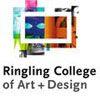
Ringling College of Art and Design (RCAD) is Florida’s only post-secondary institution dedicated exclusively to teaching art and design. One of the school’s most popular programs is the Computer Animation BFA. Established in 1990, this 120 credit-hour program opens the door to coveted internships with places such as Pixar, DreamWorks, Sony Pictures, Nickelodeon, and Walt Disney Animation Studios. Thanks to RCAD’s industry relationships, students also have the unique opportunity to engage in fourth-year critiques with professionals from these and other major studios.
Other program features include courses taught by animation industry veterans; guest speakers from major studios; real-world projects with area businesses; and participation in the RCAD initiative INDEX (Industry Experience). Developed in partnership with The Patterson Family Foundation, INDEX provides experiential learning opportunities from additional internships to competitions sponsored by major clients and brands. INDEX also helps students with resume and portfolio-building.
The Computer Animation BFA program at Ringling College of Art and Design highlights 48 credit hours in the major and the Media Arts First Year Community (MA-FYC) consisting of 18 credit hours. Course examples for the MA-FYC include 2D Design; Figure Drawing I-II; 3D Design; and Perspective Drawing I.
With 12 credit hours of open electives, BFA students can enhance the curriculum by developing skills in additional areas of art and design. Examples of required major courses include Computer Animation I-VI; Visual Development for Computer Animation I-II; Traditional Animation I-II; Story Development I-III; and Animation Preproduction.
The culminating experience for the RCAD BFA program is the Thesis Project in Computer Animation, which incorporates animation methods, technologies, and sound to demonstrate proficiency in all areas of computer animation. Students will present and defend their work.
For students seeking a program that explores animation and other areas of art and design, Ringling College of Art and Design has a Motion Design BFA that explores 2D and 3D animation, storytelling, visual effects (VFX), sound design, stop motion animation, and graphic design. Other program features include opportunities to develop creative projects in teams; participation in the ART Network Group; access to the state-of-the-art Studio 314; and the FutureProof Conference.
This week-long event, hosted by the Department of Motion Design, consists of workshops, presentations, technical demos, and other activities designed to enhance the Motion Design curriculum. Past and recent speakers include artists and others from places such as Nickelodeon, CNN, Disney Live Entertainment, Telemundo, FutureDeluxe, and Hornet.
The RCAD Motion Design BFA requires 120 credit hours, including 39 in the major, 12 regular electives, and 12 open electives. Other credits come from liberal arts, general education, art and design history, and First Year Community (FYC). Major course examples include Design in Sequence for Motion; 2D Animation; 3D Animation; Animation Techniques; Branding and Visual Systems; Design Fundamentals for Motion; Concept Development I-II; Advanced 2D Animation; and Advanced 3D Animation.
Elective examples include Persuasive Messaging in Motion; Digital Compositing for 2D; Experimentation in Motion; Digital Compositing for 3D; Styleframe Development in Motion; Project Mapping; Advanced Motion Design Techniques I-II; and Advanced Animation Techniques.
The culminating experience for the Motion Design BFA program at Ringling College of Art and Design is the senior project consisting of two courses: Production Studio and Experimental (with presentation).
Graduates of the Computer Animation and Motion Design BFA programs at Ringling College of Art and Design are prepared to pursue careers across all areas of animation, film, television, and other related fields. Program alumni can be found at places such as Pixar, MPC, Walt Disney Animation Studios, Sony Pictures Imageworks, Weta FX, Electronic Arts (EA), DreamWorks Animation, LAIKA, Cartoon Network, Lucasfilm, Nickelodeon, Riot Games, Blizzard Entertainment, Reel FX, Hasbro, and Psyop.
Founded in 1931, Ringling College of Art and Design is a private, not-for-profit college that began as a collaboration between circus baron John Ringling and Dr. Ludd M. Spivey—then president of Southern College. The school launched as a remote branch of Southern College named The School of Fine and Applied Art of the John and Mable Ringling Art Museum. Around 75 students and 13 faculty members arrived for the school’s first class.
Today, Ringling College of Art and Design sits on a 48-acre campus that serves 1,666 students enrolled in 11 different majors leading to a BFA degree, two majors leading to a BA, and 10 minors. In addition, RCAD recently launched an undergraduate Artificial Intelligence (AI) certificate. This is the first program of its kind at an art and design college.
Ringling College of Art and Design is accredited by the National Association of Schools of Art and Design (NASAD) and the Southern Association of Colleges and Schools Commission on Colleges (SACSCOC).
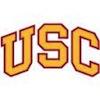
University of Southern California (USC) is home to the School of Cinematic Arts (SCA). Founded in 1929, the school houses state-of-the-art facilities and equipment accessible to all animation students. One of the many standouts among SCA’s facilities is the brand new main complex. This creative space features all digital classrooms, animation production studios, post-production suites, soundstages, mixing theaters, fabrication spaces, research labs, and screening rooms that seat up to 400 people.
The Robert Zemeckis Center for Digital Arts in the School of Cinematic Arts provides additional production spaces, motion capture suites, and Trojan Vision—the University's full-service television station with programming that reaches homes across LA and many national and international outlets. USC School of Cinematic Art students also have access to the Ganek Immersive Studio; Cintiq and computer labs; and an IMAX theater.
Across SCA programs, students can collaborate with peers in other USC schools such as Roski School of Art and Design, Viterbi School of Engineering, the School of Architecture, and Thornton School of Music. Other SCA features include guest speakers; courses taught by seasoned filmmakers and other industry professionals; and the student-organized USC Animation Studio Day, where students can meet with studio representatives to present their portfolios, discuss internships, and consider job opportunities.
Also within USC’s School Cinematic Arts is The John C. Hench Division of Animation + Digital Arts (Hench DADA) and the Expanded Animation Division (EAD). Both divisions provide animation programs leading to a BFA or MFA. Options include an Animation + Digital Arts BFA (Hench DADA), the Animation + Digital Arts MFA (EDA), and the Expanded Animation Research + Practice (XA) MFA (EAD).
Hench DADA also houses a 3D Animation and Cinematic Arts minor. The Interactive Media Division, within the School of Cinematic Arts, houses a Game Animation minor. The 3D Animation and Cinematic Arts minor allows students to focus in a specific area through electives. Potential focus areas include character animation, visual effects (VFX), motion capture, virtual reality (VR), and modeling. The Game Animation minor combines systems thinking and animation coursework.
Through electives, Game Animation students may explore areas such as VFX, game development, or digital effects. USC SCA minors are 16 units and all require a final project to graduate.
The Animation + Digital Arts BFA program at University of Southern California is a four-year STEM-coded program that provides formal concentration options. Examples include Character Animation, Interactive Animation, VFX, Immersive Media, Documentary Animation, 3D Computer Animation, Motion Graphics, Visualizing Science, and Experimental Animation.
In addition to a concentration, BFA students will complete courses such as Story Structure for Animation; Reality Starts Here; 3D Character Performance Animation; Two-Dimensional Art Workshop; Cinematography for Animators; History of Animation; and Professionalism of Animation. Electives allow students to develop skills in additional areas of animation.
Elective examples include Live Action Integration with Visual Effects; 3D Animation for Motion Graphics (C4D); Production Design for Animation Projection Mapping Design and Production; Demystifying the TV Animation Pipeline; Real-Time Animation (Unreal Engine); Experiments in Immersive Design; Procedural Animation (Houdini); Pipeline and Character Modeling for Animation; and The World of Visual Effects.
During the second semester of year three, and in year four of the program, students will complete Ideation + Pre-Production, along with two Senior Project courses resulting in a fully rendered, animated piece, with soundtrack. Final projects are presented to a committee for critique and approval.
The Animation + Digital Arts MFA at USC is a STEM-coded, three-year terminal degree program that provides mini studios for all students, ongoing workshops, and internship opportunities. Techniques and approaches explored range from hand-drawn character animation to interactive digital animation. Course examples for the program include Animation: The Art and the Industry; Expanded Animation; Fundamentals of Storytelling for Animation; Cinematic Ethics; Animation Design and Production; Animation Storyboarding Practicum; and Fundamentals of 3D Character Animation.
Elective units are an important component of the MFA program. Students must complete 15 units to graduate. Examples include World Cinema Before 1945; Survey of Interactive Media; and Seminar: Avant-Garde Film/Video.
The culminating experience for the Animation + Digital Arts MFA at University of Southern California is the master’s thesis completed across three courses including, Animation Pre-Thesis Seminar; Master’s Thesis (594a); and Master’s Thesis (594b).
The XA MFA at University of Southern California focuses on experimentation, animation research, and innovation. Designed for advanced artists, this terminal degree program consists of 50 units (minimum) completed across six semesters. Students in this unique program can select from an extensive list of research concentrations. Examples include Experimental Animation; Virtual Humans and AI; Science Visualization; Performance Gesture; Animation for Robotics; Gesture Movement; Documentary Animation; Dreams and Consciousness; Sound Design; Fine Art Animation Practice; Narrativity; and Cinematic Installations.
Courses for the USC XA MFA program are supported by exhibitions, research collaborations, and overnight field trips. Course examples include the Art of Motion in Virtual Space; Expanded Animation Production; Theory and Practice in Contemporary Animation; Art of Animation; Writing and Story Art for Vision and Motion; Expanded Animation Production; Animation Sound Design Practice; Advanced Animation Research Seminar; Applied Expanded Animation; and Survey of World Animation.
Electives allow students to focus in additional areas of animation. Elective course examples include Stop Motion Puppet and Set Design; Animation for Virtual Characters, Robotics, and AI; Contemporary Topics: Animation Drams and Consciousness; Gesture Movement for Animation; Documentary Animation Production; Stop Motion Performance; Advanced Methods and Approaches; and Directed Research.
The XA MFA program at USC culminates with the Master’s Thesis, completed over three courses: Animation Pre-Thesis Seminar, Master’s Thesis (594a), and Master’s Thesis (594b). Final XA MFA projects have focused on animation, augmented and virtual reality (AR/VR), interaction, installations, and more.
Graduates of the Animation programs at the University of Southern California are prepared to pursue leadership roles in the entertainment industry. Program alumni have been hired at major studios such as Industrial Light & Magic (ILM), DreamWorks Animation, Nickelodeon Animation Studios, Digital Domain, Pixar, Illumination, and Sony Pictures. Many USC alumni have gone on to launch their own studios or freelance businesses.
Founded in 1880, University of Southern California is the oldest private research university in the state. When it opened, the school had just 53 students and 10 faculty. Today, USC enrolls approximately 47,000 students served by a faculty of more than 4,400. This makes University of Southern California the largest school by enrollment in the state and largest private sector employer in Los Angeles.
Students at USC have access to more than 600 graduate and professional programs across 23 schools and divisions. The University of Southern California is accredited by the WASC Senior College and University Commission (WSCUC).
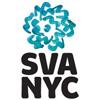
School of Visual Arts (SVA) hosts an annual festival known as the After School Special. This decade old event highlights the work of some of SVA’s most accomplished alumni in animation, film, television, and visual effects (VFX). In addition to the After School Special, School of Visual Arts houses one of the nation’s largest animation departments.
Serving approximately 760 animation students, the Animation Department at SVA provides two undergraduate programs for animators including BFAs in Animation, and 3D Animation and Visual Effects. Both programs provide hands-on experience with latest industry software including Adobe Animate, Storyboard Pro, After Effects, Toon Boom Harmony, and Maya.
BFA students also benefit from relationships with independent animators across New York and alumni-owned studios such as Titmouse, Augenblick, and Plymptoons; and mentorships with accomplished directors, character designers, and VFX artists.
Across programs, students will take courses such as Gesture Drawing; Python Scripting for Maya Artists; Sonic Storytelling; VFX and Compositing I-II; Visual Development; History of Animation I-II; Life Drawing: Figure, Form and Function; Advanced Animation Workshop I-II; and Animation Workflow.
The culminating experience for the Animation BFA is the thesis and presentation. 3D Animation and Visual Effects students will have the option to complete a thesis in computer animation or visual effects and compositing.
Graduates of the Animation Department at SVA are prepared to pursue careers in all areas of animation, film, VFX, and more. They can be found at DreamWorks, Lucasfilm Animation, Cartoon Network, Warner Bros. Animation, Nickelodeon, Sony Pictures Animation, and Disney Animation Studios. Some alumni have also gone on to land positions at established independent studios, or they have launched their own.
For animation students seeking an advanced degree, School of Visual Arts has a Computer Arts MFA program. Established in 1986, this terminal degree program was the first in the nation to focus solely on computer arts. Program features include immersive workshops; visiting artists; guest lectures in animation, motion graphics, and experimental art; internships with local and national studios; and an active network of more than 1,200 alumni.
SVA Computer Arts MFA students may focus their studies in animation, experimental art, or motion design. The curriculum also allows students to pursue a multidisciplinary course of study. Course examples for the program include Programming for Animators; Narrative and Visual Storytelling; Animation Culture; Digital Storyboarding; Modeling and Animation; Character Animation; Compositing; Editing for Animation; Experiments in Virtual Production; Techniques in Experimental Animation; Electronic Portfolios; 3D Animation for 2D and Motion Graphics Artists; technical Direction; and Creative Programming for Artists I-II.
The culminating experience for the Computer Art MFA program at SVA is the thesis project completed across four courses: Thesis Research and Writing I-II; and Thesis I-II.
Computer Art MFA students have been nominated for 13 Student Academy Awards and won nine. Students have also won awards at SIGGRAPH; Prix Ars Electronica; ISEA; the YouTube Awards; the Leonardo Awards for Excellence; and the Adobe Design Achievement Awards. Student works have also appeared at the New York Film Festival (NYFF); Cannes Film Festival; Tribeca Film Festival; Sundance Film Festival; Annecy International Film Festival; and the Ottawa Film Festival (OFF).
Graduates of the Computer Arts MFA program at School of Visual Arts are routinely hired at major companies and studios such as Industrial Light & Magic (ILM), MTV, Pixar, Google, Adobe, Sony Pictures Imageworks, Electronic Arts (EA), Disney, and DreamWorks. Some alumni have also gone on to launch their own studios and freelance businesses.
School of Visual Arts opened in 1947 with three teachers and 35 students. Today, the school serves approximately 3,815 students enrolled in dozens of BFA, MA, MFA, and MPS programs. School of Visual Arts is accredited by the Middle States Commission on Higher Education (MSCHE), with individual program accreditation by the National Association of Schools of Art and Design (NASAD) and the Council for Interior Design Accreditation (CIDA).

University of California, Los Angeles (UCLA) is home to the School of Theater, Film and Television (TFT), which serves approximately 680 students enrolled in 15 programs leading to an undergraduate or graduate degree. At the undergraduate level, the School of TFT has a Film, Television, and Digital Media BA (FTVDM-BA) program with a concentration in Animation.
During the first and second years of the program, students focus on foundational courses. In the third year, students will hone their skills in television, film, and digital media production. In the final year of the program, students will immerse in the Animation concentration, consisting of 20 units of upper division coursework.
The UCLA Film, Television and Digital Media BA culminates with a professional internship and final project. Graduates are prepared to pursue careers in the entertainment industry or apply to the UCLA Animation Workshop.
Established in 1948 by Disney Animator William Shull, the workshop launched an Animation MFA program when UCLA TFT graduate Dan McLaughlin took over Shull’s post in 1971. Today, the UCLA Animation Workshop MFA is one of the oldest and most competitive programs of its kind in the U.S. Housed in the School of TFT, the three-year Animation Workshop accepts just 12 students each year.
Program features include immersive studies in CG technologies within the state-of-the-art Walter Lantz Digital Animation Studio; personalized instruction by renowned industry professionals; and access to other facilities and equipment such as stop motion and general-purpose labs, a sound booth, the Animation Library, animation camera cranes, and twelve animation desks (donated by Disney).
All BA students will also have the opportunity to develop individual projects across various animation styles and techniques. Each student will complete one traditional film; one computer film; one interactive animation project or game; and a thesis film.
Course and elective examples for the program include Seminar in Animated Film; Stop Motion Workshop; Advanced Animation/Character Animation; Digital Animation Workshop; Art & Process of Entertainment Design (Imagineering); Interactive Animation; Issues in Electronic Culture; Advanced Computer Animation (Maya); Visual Thinking and Organization for Animation; and Film Structure.
All Animation Workshop students (and FTVDM-BA students) also have access to curriculum-enhancing courses in areas such as screenwriting and film editing.
Graduates of the Animation Workshop at University of California Los Angeles are prepared to pursue leadership roles and others at major companies and studios across the U.S. and abroad. School of TFT alumni have been hired at places such as Nickelodeon, Pixar, Walt Disney Imagineering, and DreamWorks.
Founded on May 23, 1919 as the Southern Branch of the University of California, UCLA serves approximately 46,675 students from nearly 110 countries. The school provides more than 250 programs across 12 professional schools and UCLA College. University of California Los Angeles is accredited by the WASC Senior College and University Commission (WSCUC).
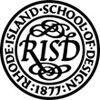
Rhode Island School of Design (RISD) opened its doors in the late 1800s with a mission to support Rhode Island’s growing jewelry and textile industries. The first courses of study at RISD focused in two areas: Freehand Drawing and Painting, and Mechanical Drawing and Design. Today, the school caters to artists of all kinds including from sculptors to animators.
All programs provide hands-on learning with access to state-of-the-art production studios; Macintosh and CGI workstations equipped professional editing and production software; sound mixing studios; and digital editing rooms. RISD students also benefit from collaborative study; experimental projects; workshops; the First Year in Florence program; and internship opportunities with local and national studios.
Rhode Island School of Design is also home to the Film/Animation/Video (FAV) Department. Serving approximately 150 students, the department houses the FAV BFA program, which combines animation, live-action, and open media. While students may specialize in any of the three areas, all students must complete first year studios in Experimental and Foundation Studies (EFS). Students will also take liberal arts courses to supplement studio studies.
Course examples for the RISD FAV BFA include Puppetry; Character Animation; Topics in Movement: Performance Assemblages; Animation Practices; Storyboarding; Intermediate Studio: Animation; Directing Cinema; Stop-Motion Animation; Computer Generated Imagery 3D; Experiments in Stop-Motion Animation; Experimental Film Techniques; Digital Effects and Compositing for the Screen; Computer Animation: Integrated Techniques; Advanced Stop-Motion Animation; and Character Design.
In the final year of the FAV BFA program at RISD, students will produce an independent project from idea to finished product. Students will receive critiques and individual guidance weekly from established industry professionals. Class meetings for the year will focus on group critiques, film screenings, and specialized technical workshops.
The year culminates with a professional reel, portfolio, and the RISD Senior Festival. Held in May, this public event allows students to network and present their final animated or live action films.
Graduates of FAV BFA program at the Rhode Island School of Design have gone on to create, direct and/or produce animated films and series such as Family Guy (Seth Macfarlane, Creator), The Simpsons (Lance Wilder, Animator), and the Oscar-nominated animated short Feral (Daniel Sousa, Animator and Director).
RISD graduates are also routinely hired at major networks and studios such as DreamWorks, HBO, Pixar, and PBS. Others have launched their own independent studios, freelance businesses, and production companies.
Rhode Island School of Design was founded in 1877 by a small group of women led by Helen Adelia Rowe Metcalf. One of the nation’s first independent colleges of art and design, RISD serves approximately 2,520 students enrolled in 44 full-time bachelor’s and master’s degree programs. This private nonprofit college and museum is fully accredited by the New England Commission of Higher Education (NECHE), and approved by the National Council for State Authorization Reciprocity Agreements (NC-SARA).
RISD’s Architecture, Landscape Architecture, and MA in Teaching programs have special accreditation by the National Architecture Accrediting Board, the Landscape Architectural Accreditation Board, and the RI Department of Education.

The School of Art (SoArt) at Pratt Institute (Pratt) houses eight departments and more than 30 degree, minor, and certificate programs. Students in all SoArt programs and departments benefit from the school's guest lecture series; frequent exhibitions; and courses led by creative professionals and scholars.
For students seeking a degree in animation, the SoArt Department of Digital Arts houses BFA degrees in 2D Animation, and 3D Animation and Motion Arts. Students seeking a graduate degree can enroll in the 3D Animation and Motion Arts MFA program.
Across all Digital Arts programs, students benefit from small class sizes; frequent trips to festivals, screenings, exhibitions, and shows in New York City; collaborative projects; study abroad experiences in places such as Scotland and Germany; and access to digital computing facilities outfitted with state-of-the-art Apple computer stations and the latest industry software including Nuke, Adobe Suite, ToonBoom, TVPaint, ProTools, and Ableton.
Other production spaces include Dragonframe stations; a green screen room; the stop motion studio; an audio editing suite; an experimental studio; and a spatial computing lab. Studio Crit—an additional space for critiques—hosts regular sessions that allow students to present projects to professors and peers for feedback.
The Department of Digital Arts at Pratt Institute also oversees an internship program designed specifically for digital artists. Throughout the academic year, the departments designated Internship Coordinator matches students with studios and companies in the New York metro area. This allows students to gain experience and skills in areas such as animation, game design, visual effects (VFX), motion graphics, and interaction design.
The culminating experience for the 2D Animation and 3D Animation and Motion Arts programs at Pratt Institute is the senior capstone project. In semester six of the program, students will begin production with an animation development course. In semesters seven and eight, students will complete their capstone projects across the Senior Projects I and II courses. Projects must be portfolio quality to graduate from the program.
Graduates are prepared to pursue positions in all areas of animation. Alumni have gone on to direct their own independent award-winning animated films and collaborate on many other celebrated animated projects. Pratt 2D and 3D graduates can also be found at places such as Nickelodeon, Disney, Titmouse, and Cartoon Network.
The 3D Animation and Motion Arts MFA at Pratt Institute is a 60 credit-hour, two-year terminal degree program that explores a multitude of methods and techniques. Examples include animation, visual effects (VFX), rendering, audio, stop-motion, texturing, modeling, and lighting. While students may explore these areas collectively, the sheer number of available courses allows them to customize the program to their interests.
All MFA students will create narrative films, installations, and non-narrative films using 2D and 3D digital animation techniques, live action techniques, and motion graphics. Course examples for the program include 3D Modeling I; 3D Animation: Expressive Motion; 3D Character Modeling and Rigging; Lighting and Rendering; 3D Animation Studio I: First Film; Graduate Animation Seminar I-II; and 3D Animation Studio II: Performance and Acting.
The 3D Animation and Motion Arts MFA program at Pratt Institute culminates with a thesis project completed across three courses: Thesis I, Post Production, and Thesis II. Graduates are prepared to pursue teaching positions and leadership roles in the film and television, game design, advertising, engineering, forensic animation, medical animation, education, and e-learning industries.
Pratt MFA alumni have been hired at places such as Sony Pictures Imageworks, DreamWorks, New York Institute of Technology (NYIT), Walt Disney Animation Studios, Gameloft, Howard University, Cartoon Network, Industrial Light & Magic (ILM), The Digital Worlds Institute at University of Florida (UF), NBCUniversal, Curious Pictures, Digital Domain, Rochester Institute of Technology (RIT), Augenblick, Framestore, National Taiwan Normal University (NTNU), and Titmouse.
Pratt Institute was founded in 1887 by industrialist and oil magnate Charles Pratt. Additionally, in 1896 Pratt founded Pratt Free Library—Brooklyn’s first public library. Serving approximately 5,135 students today, Pratt Institute was also one of the first colleges in the U.S. to welcome students without regard to class, gender, or color.
The school provides 48 programs across six schools, The Center for Interdisciplinary Studies, and campuses in Brooklyn, Manhattan, and Utica, New York. Pratt Institute is accredited by the Middle States Commission on Higher Education (MSCHE).

Once called the “MIT of Visual Effects,” Gnomon is a competitive digital arts college the provides degree and certificate programs. The school also provides more than 100 individual courses and a preparatory program known as Foundation in Art and Design (FIAD). Open to high school graduates, the FIAD is a full-year, non-vocational program that provides an alternative to a traditional community college path. Students will immerse in foundational art and design studies, along with introductory courses in animation, game production pipelines, and the 3D software used in the visual effects industry.
FIAD students may choose to focus on portfolio development; obtaining an entry-level position in animation, games, or visual effects; or transferring into a Gnomon degree or certificate program.
Degree and certificate options include the 12-term Digital Production BFA and the two-year Digital Production for Entertainment (DPE) certificate. The BFA requires 180 total units, including 135 in career-focused study and 45 in general education. Students may choose from three concentration options including Visual Effects Animation; Game Art; and 3D Generalist. Although the Visual Effects Animation concentration is a top choice for animators, all options provide intensive training in industry software such as Houdini, ZBrush, Unreal Engine, Nuke, Maya, After Effects, V-Ray, and Photoshop. All options also feature extensive animation coursework.
Across programs, students have access to courses and electives such as History and Principles of Animation; Character Animation 1-3; Liquid Simulations; Animation and Visual Effects 1-2; Art of Compositing; Previsualization and Animatics; HD Digital Filmmaking for VFX; Maya Modules; Dynamic Effects 1-4; Storyboarding; Advanced Compositing; Motion Capture; Houdini 1-4; and Virtual Production.
The culminating experience for the Digital Production BFA program at Gnomon is the creation of a professional demo reel. Students will complete the project across four courses (Demo Reel 1-4).
The Digital Production for Entertainment certificate is a 147-unit, full-time program with five areas of study. This includes Character and Creature Animation; Visual Effects Animation; Game Art; Modeling and Texturing; and 3D Generalist. All areas provide intensive training in Maya, Nuke, Unreal, ZBrush, Substance, V-Ray Houdini, and Unreal Engine.
Regardless of focus area, students will study the 3D production pipelines in film, visual effects, and games. Course examples across areas include Character Animation 1-2; Motion Capture; Dynamic Effects 1-4; Animation and Visual Effects 1-2; Storyboarding; Art of Compositing; Houdini 1-4; Previsualization and Animatics; Character Rigging Fundamentals; and Photoshop for Digital Production.
In the final two terms of the Gnomon DPE certificate program, students will complete the Career Realities course, the Portfolio and Resume Workshop course, and six Reel Lab courses. The lab courses culminate with a demo reel or the student’s best work.
Gnomon graduates are prepared to pursue careers across the entertainment industry. With a near 100% employment rate, Gnomon alumni can be found at places such as Marvel Entertainment, Walt Disney Animation Studios, DreamWorks, Industrial Light & Magic (ILM), Nickelodeon Animation, Weta FX, Blizzard Entertainment, Sony Pictures Imageworks, Electronic Arts (EA), Naughty Dog, Digital Domain, Riot Games, and Reel FX.
Established in 1997 by Alex Alvarez, Gnomon sits on a 45,000 square feet campus within the historic Television Center Studio lot in North Hollywood, California. The school serves more than 550 students enrolled in digital arts degree and certificate programs. The school also provides 110 individual courses for skills improvement or to enhance marketability. The Accrediting Commission of Career Schools and Colleges (ACCSC) accredits gnomon.

With locations in Abu Dhabi and Shanghai, along with 12 global academic centers and research programs across 25+ countries, New York University (NYU) sends more students overseas than any other American university. NYU Abu Dhabi serves approximately 530 students enrolled in 25 areas of study, while NYU Shanghai serves more than 1,600 students across 19 areas of study. Students across all NYU colleges, schools, and institutes are encouraged to participate in NYUs broad range of study abroad programs. This includes students in Tisch School of the Arts (Tisch).
Founded in 1965, Tisch serves more than 4,000 students enrolled in BA, BFA, MA, MFA, MPS, and PhD programs. Programs are provided across four institutes including the Maurice Kanbar Institute of Film and Television; the Institute of Emerging Media; the Martin Scorsese Institute of Global Cinematic Arts; and the Institute of Performing Arts.
Producing more than 5,000 films per year, the Maurice Kanbar Institute of Film and Television houses the Department of Animation and Digital Arts. Within the department is a Film and Television BFA with an Animation Area. Launched in 1980 with 80 students and five courses, the Animation Area was the first program to bring digital technology to Kanbar. Today, the Animation Area provides close to twenty different courses to more than 500 students from nearly every state and dozens of countries.
The Animation Area at NYU Tisch provides instruction in 2D, 3D, and Traditional Animation. The program begins with animation fundamentals and progresses to intermediate animation, then advanced. Course examples include Experimental Animation; Drawing and Design for Animation; Stop Motion Animation; Visual Effects for Compositing; Special Topics in 3D Animation; Advanced Animation Production; Action Analysis I-II; Writing for Animation; and Animation: From Pitching to Pipeline to Production.
In addition to providing in-demand courses, the Animation Area at NYU Tisch provides access to state-of-the-art facilities; interactions with industry guest speakers; participation in events hosted by the Student Animation League (SAL); and guidance, networking opportunities, and community spaces through the NYU Tisch Animation Alumni Association (AAA).
Graduates of the Film and Television BFA (Animation Area) at NYU Tisch are prepared to pursue positions at studios across the U.S. and abroad. Some program alumni also go on to launch their own independent studios and freelance businesses. Graduates can be found at places such as Walt Disney Animation, Pixar, and DreamWorks.
New York University is the largest private university in the U.S. Founded in 1831, the school serves more than 55,000 students across degree-granting campuses in New York, Abu Dhabi, and Shanghai. With more than 19,000 employees, New York University is also one of the state’s largest employers. Students at NYU have access to more than 400 program options across 20+ colleges, schools, and institutes. New York University is accredited by the Middle States Commission on Higher Education (MSCHE).
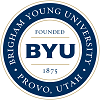
Brigham Young University (BYU) is home to one of the nation’s most competitive animation programs. Established in 2010, the BYU Center for Animation accepts just 20-25 students each year. Students may gain entrance to this closed-enrollment program through BYU’s Animation BFA program or the Computer Science BS with an Animation and Games emphasis.
Throughout the BYU Center for Animation program, students will gain hands-on experience through individual and collaborative projects; faculty mentoring; and internships with major studios such as DreamWorks, Pixar, and Disney. Students will also develop advanced design and software skills. In the junior or senior year of the program, students can specialize in anything from 3D animation to visual effects (VFX).
Housed in the Design Department in the College of Fine Arts, the Animation BFA is a limited enrollment program that accepts just 75 students per enrollment period. In this 65 credit-hour program, students will explore areas such as 3D modeling, storyboarding, character animation, compositing, previsualization, lighting, special effects, materials/shading, technical animation, and concept art.
Course examples include Experimental Animation and Production; Visual Development; Scripting for Animation; 3D Visual Effects; Technical Animation; The Joy and Beauty of Computing; Scripting for Animation; Advanced Shading; Pitching for Film and Games; Lighting for 3D Graphics; Visual Narrative; Intermediate 3D Computer Graphics; Animated Film Production 1-3; Advanced Storyboarding; Visual Development and Character Design; Directed Studies in Animation; and Business and Ethics in Animation.
Housed in the Department of Computer Science in the College of Physical and Mathematical Sciences, the Computer Science BS (Animation and Games emphasis) is a limited enrollment program that accepts just 42 students per enrollment period. Consisting of 77-81.5 credit hours, the program explores animation, visual effects, software engineering, video game production, programming, computer graphics, user interfaces, and more.
Course examples for the program include Scripting for Animation; Real-Time Techniques; Animated Film Production 1-3; Materials and Surfacing; Photography for Animation; Computer Graphics; 3D Visual Effects; Previsualization; Visual Narrative; Digital Sculpting; Lighting for 3D; and Advanced Shading; and History of Animation.
The culminating experience for all programs is the Film Animation Capstone project completed across several courses. Films are submitted to national and international competitions. BYU animation students have won awards and received recognition from the Nickelodeon Film Festival; ACM Siggraph; Cannes Film Festival; the Academy of Television Arts and Sciences Foundation; Annecy Film Festival; the Electronic Entertainment Expo; and Houston WorldFest.
Graduates of the Animation programs at Brigham Young University are prepared to pursue careers in the entertainment industry, game design and development, advertising, and many others. Program alumni have been hired at places such as Disney, Nickelodeon, Pixar, Industrial Light & Magic (ILM), DreamWorks, Blizzard Entertainment, Sony Pictures Animation, Hasbro, Riot Games, and Digital Domain.
Brigham Young University was founded in 1875 by Brigham Young—President of the Church of Jesus Christ of Latter-day Saints. The school opened as Brigham Young Academy (BYA) on January 3, 1876. On the first day of classes, the school had just 29 students enrolled. Today, Brigham Young University serves approximately 35,745 students from more than 100 countries. Campuses include BYU-Utah, BYU-Idaho, BYU-Hawaii, BYU Pathway Worldwide, and Ensign College.
One of the largest private universities in the U.S., BYU provides approximately 435 programs across dozens of colleges and departments. Brigham Young University is accredited by the Northwest Commission on Colleges and Universities (NWCCU).

Rochester Institute of Technology (RIT) is the third largest source of undergraduate STEM degrees among all private universities in the U.S. In 1983, the school became the first university in the nation to offer a BS in Biotechnology, and it enrolls more female astrophysical sciences and technology doctoral students than any other institution.
Rochester Institute of Technology also houses a School of Film and Animation, which is a designated Center of Excellence (COE) by Toon Boon. Part of the College of Art and Design, the school provides numerous opportunities to gain real world experience—all before graduation.
For starters, RIT houses the fourth-oldest and one of the largest cooperative (co-op) education programs in the world. All students are required to complete at least one co-op before graduation. Next, School of Film and Animation students may participate in RIT’s Study Away: LA Program. This includes a semester away in Los Angeles, where students can work at top studios and entertainment companies.
Finally, the Coca-Cola Refreshing Films program gives students the opportunity to create content for the big screen. In 2022, RIT Film and Animation students won the program, and their short film ran nationwide in AMC and Cinemark movie theaters.
Other School of Film and Animation features include access to the 52,000 square foot MAGIC Spell Studios; classrooms and labs outfitted with state-of-the art equipment and the latest industry software such as Maya, Dragonframe, TVPaint, and Adobe Creative Suite; courses taught by award-winning industry professionals; and participation in Creative Industry Day which attracts representatives from film studios, design firms, and advertising agencies.
Undergraduate programs in the School of Film and Animation include a Film and Animation BFA that focuses on production, screenwriting, 2D animation, 3D animation, and stop motion animation; a BFA in Film and Animation with an Animation or Production option; and a Motion Picture BS that combines engineering and the arts with animation production, feature film, and television.
The Animation option has three tracks including 2D Animation, 3D Animation, and Stop Motion. Across all programs, students will have opportunities to explore AR/VR, digital effects, sound design, games, compositing, and live-action.
At the graduate level, the School of Film and Animation at RIT has a Film and Animation MFA with four options including 2D Animation; 3D Animation; Production; and Screenwriting. Students in this program have 24/7 access to a dedicated graduate lab and opportunities to gain experience while working as a faculty research assistant, graduate assistant, or other paid position.
The BFA, BS, and MFA programs culminate with the production of an industry-ready film. Finished films will be screened at a public event.
Graduates of Rochester Institute of Technology enjoy a 92% employment rate. School of Film and Animation alumni are routinely hired at major studios such as DreamWorks, Lucasfilm, Sony, Industrial Light & Magic (ILM), Disney Animation Studios, Electronic Arts (EA), Nickelodeon, and Dolby.
Rochester Institute of Technology was founded in 1829 as the Rochester Athenaeum. With global campuses in China, Croatia, Dubai, and Kosovo, this research university serves more than 20,000 students, making it one of the largest private universities in the U.S. RIT provides 200+ academic programs across 10 colleges and institutes, and the School of Individualized Study. Rochester Institute of Technology is accredited by the Middle States Commission on Higher Education (MSCHE).

The School of Cinematic Arts at DePaul University (DePaul) graduated its first class in 2005. Since then, the school has produced directors of hit television shows such as Grey’s Anatomy and The Blacklist; Emmy Award nominees such as Vera Drew; and animators for Guillermo del Toro's Pinocchio, Epic Games, and Gus Van Sant's Don't Worry, He Won't Get Far on Foot.
Housed in Jarvis College of Computing and Digital Media (CDM), the School of Cinematic Arts also provides many programs for students seeking careers in animation. Options include the Animation BA, BFA, MA, MFA, BA/MA, and BFA/MA, and a Computer Science (CS) + Animation (CS+ANI) BS with an Animation Technical Director (TD) concentration. An Animation TD minor is also available.
The Animation BFA has concentrations in 3D Animation; Game Art; Visual Effects; Storyboarding and Character Design; Motion Graphics; and Cinema. While the Animation BA does not have concentrations, students in this program may create their own focus area through both major and open electives. Examples include Sound Design for Animation; Visual Effects; Stop Motion Animation; 3D Design for Animation; Screenwriting for Majors; Digital Puppet Animation; Illustration Foundations; and Hybrid Animation.
Open electives may be selected from more than 20 Jarvis College minors. Minor examples include Film Production; Designing for Physical Technology; Experimental Filmmaking; Visual Effects; Television Graphic Design; Production; Information Technology; Comedy Filmmaking; and User Experience Design.
The Animation MA program at DePaul University has five concentrations including Traditional Animation; Storyboarding and Character Design; 3D Animation; Technical Artist; and Motion Graphics. Course examples for the program include 3D Animation Production; Animation Figure Study; Advanced Topics in Visual Effects; Topics in 3D Animation; and Game Art Pipeline.
The Animation MFA program at DePaul is designed for animators who have earned an undergraduate degree in visual arts areas such as animation, film, graphic design, or illustration. Because the program follows the project model, students will spend most of their time creating short films and thesis projects under the direction of MFA co-chairs and faculty mentors.
Course examples for the program include Animation Mechanics; Storyboarding I; Sound Design for Animation; Cinema, Animation and Art; Animation History and Practice; Directing Sound Design and Music; Animation Graduate Seminar; and Graduate Teaching Seminar.
The multidisciplinary BS in Computer Science and Animation is designed for students seeking technical artistic roles in animation and game development. In addition to a concentration in Animation TD, the program has a concentration in Game Art TD. Course examples for the program include Introduction to Animation Production; Optimized C++; 3D Character Animation; Environment Modeling; Programming Languages; 3D Modeling and Shading; Advanced Motion Capture Studio; Rendering and Graphics Programming; 3D Animation; Motion Graphics Foundations; 3D Design and Modeling; Advanced 3D Rigging; and Game Art Pipeline.
In addition to access to a variety of in-demand courses, DePaul CS+ANI students benefit from interdisciplinary group projects with students majoring in areas such as 3D animation, storyboarding and character design, game art, game programming, and game design.
Across all School of Cinematic Arts programs, students benefit from courses taught by award-winning filmmakers who are part of one of the nation’s largest full-time animation faculties; access to a state-of-the-art, 32,000 square feet production facility known as DePaul Cinespace Studios; and the new Jarvis Student Center for Innovation and Collaboration. This open, 8,000 square feet space focuses on industry partnerships and multidisciplinary professional learning across emerging technologies. Collaborations and projects between students and faculty emphasize innovation and community needs.
Cinespace and other CDM/SCA studios and facilities provide access to the latest industry-standard animation software, tools, and technologies. This includes Cintiq labs, stop motion stages, fabrication studios, 3D motion capture, motion control, sound studios, professional animation and effects software, and 3D printing.
All DePaul Animation students also have the unique opportunity to participate in the Los Angeles Quarter Program. Over 10 weeks, this immersive experience allows students to intern at major Hollywood studios such as The Jim Henson Company, Disney, Warner Bros. Animation, DreamWorks Animation, Nickelodeon, Sony Studios, and Titmouse.
Additional program benefits include participation in the Premiere Film Festival; the Japan Study Abroad program; Project Bluelight; visiting artists from places such as Disney and Pixar; and access to the Animation Lodge.
The Premiere Film Festival displays and awards the best student work in animation and film. The event attracts jury members from around the country including filmmakers, industry insiders, and festival programmers.
The Japan Study Abroad program is a biennial trip that takes students to Nagoya, Kyoto, and Tokyo for tours of Japanese animation and game studios, cultural sites, and galleries.
Project Bluelight provides hands-on experience in motion picture production to all interested students. Students at The Lodge have opportunities to collaborate on group projects, build their portfolios, and network.
Graduates of the Animation programs at DePaul University are prepared to pursue advanced roles in industries such as film and television, games, and advertising. Program alumni have been hired at major studios and gaming companies such as Lucasfilm, DreamWorks Animation, Electronic Arts (EA), Warner Bros. Animation, Google, Cartoon Network, Disney Animation Studios, Epic Games, Nickelodeon, LAIKA, Blizzard Entertainment, Iron Galaxy Studios, and BioWare.
DePaul University is the largest Catholic university in the United States. Serving 21,210 students, the school is also the nation’s 12th-largest private, not-for-profit university, and the largest private, not-for-profit college in the Midwest. Founded in 1898, DePaul provides more than 300 undergraduate majors and graduate programs across two campuses, and 10 academic colleges and schools. The Higher Learning Commission (HLC) accredits DePaul University.

ArtCenter College of Design (ArtCenter) is a top employer of talent from major studios such as Warner Bros., Disney, Nickelodeon, DreamWorks, Industrial Light & Magic (ILM), Sony, Universal, Netflix, Marvel, Fox Pictures, and LAIKA. ArtCenter is also known for being one of the nation’s most innovative design schools. In the 1980s, the school became the first design institution in the U.S. to install computer labs. This helped pave the way for the digital design revolution.
Today, this 162-acre, private nonprofit design school prioritizes project-based learning in real-world settings; social impact initiatives; transdisciplinary studio (TDS) workshops; and industry partnerships.
For aspiring animators, ArtCenter College of Design has an Animation track within its Entertainment Design BS program. In this track will create animated films, as well as animations for interactive experiences and games. Through TDS workshops, students will have opportunities to collaborate with Illustration, Concept Design, and Game Design students utilizing the latest industry tools and techniques.
The curriculum for the program features courses such as Introduction to Entertainment Design; Design History of Comic Animation; CG Mechanics; Art of Research; Shorts 1-1; Performance as Art; Previsualization; 2D Fundamentals; Science and Technology; 2D Mechanics; Concept Art; Writing Studio; Modeling; Entertainment Design Industry; and Professional Practices.
In the final year of the program, all ArtCenter Entertainment BS students will complete the Capstone Production 1-3 and Portfolio 1-2 courses. Final projects will be displayed at the Grad Show exhibition, held in the heart of Old Town Pasadena at the Pasadena Convention Center and the Pasadena Civic Auditorium. The exhibition attracts industry professionals, recruiters, family, friends, and the public. ArtCenter College of Design alumni enjoy a 95% employment rate within one year after the Grad Show.
ArtCenter College of Design was founded in 1930. With campuses in Pasadena and Los Angeles, California, the school serves 2,385 students from more than 50 countries. ArtCenter students also have access to satellite studios in Petersen Automotive Museum (Miracle Mile, Los Angeles) and Berlin, Germany, as well as 11 undergraduate programs; 10 graduate degree programs leading to an MFA or MS; a joint MS/MBA program; and undergraduate minors for Business, Creative Writing, and Social Innovation students.
ArtCenter College of Design is fully accredited by the WASC Senior College and University Commission (WSCUC) and the National Association of Schools of Art and Design (NASAD). ArtCenter is also the first design school to receive the United Nations’ Non-Governmental Organization (NGO) status.
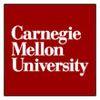
Carnegie Mellon University (CMU) is the world’s only institution to have Buggy Races. Although this tradition began as something fun and silly to do back in the 1920s, the races today begin as a design project that sees student teams brainstorm, sketch plans, build from scratch, and test the vessels before the big event. For what takes long hours to complete, Design teams take the skills and knowledge they’ve acquired in the classroom and apply it to each project—all to win one of CMU’s many coveted awards.
Students in all majors are welcome to participate in the Buggy Races. This includes students in programs supported by the Integrative Design, Arts and Technology (IDeATe) Network. In collaboration with the Robotics Institute (est. 1979) in the School of Computer Sciences, the IDeATe Network manages a total of 10 undergraduate minors, including Animation and Special Effects.
Open to students from any major, the Animation and Special Effects minor helps students develop marketable skills in areas such as digital 2D and 3D animation techniques; storytelling through animation; rendering and compositing; visual effects and procedural animation; expanded and experimental animation methods; and real-time animation systems.
Courses for this 45-unit program are project-based, immersive, and led by expert faculty in Art and Robotics. Course examples include Introduction to Computing for Creative Practice; Intermediate Studio Creative Coding; Introduction to 3D Animation Pipeline; Technical Character Animation; Storytelling Through Effects Animation; Storyboarding; Bipedal Rigging for Animation Production; Character Modeling; Experimental Capture; and Advanced Animation Studio.
While the IDeATe Animation and Special Effects minor is open to students from all majors, an ideal program option for students seeking a four-year degree is the Electronic and Time-Based Media BFA (ETB BFA). Housed in the College of Fine Arts (CFA), this interdisciplinary program explores areas such as animation, video and performance, game art, and computational and interactive arts. Students will take advanced courses such as Animation, Art, and Technology; Digital Storytelling and Resistance; Experimental Game Design; and Music Video/Visual Music.
Graduates of the ETB BFA and Animation and Special Effects minor programs at Carnegie Mellon University are prepared to pursue positions at film and animation studios, game design studios, television networks, advertising agencies, and more. Program alumni have been hired at places such as DreamWorks Animation, Comedy Central, Electronic Arts (EA), Sony Interactive Entertainment, Walt Disney Studios, Zynga Games, MTV, Paramount, Blizzard Entertainment, and Warner Interactive.
Carnegie Mellon University was founded on November 15, 1900 by industrialist and philanthropist Andrew Carnegie. Back then, the school was known as Carnegie Technical Schools. Today, CMU is a private global research university that provides over 200 programs to more than 14,500 students from 126 countries. In addition to the main campus in Pennsylvania, Carnegie has campuses in Silicon Valley and Doha, Qatar.
Housed across seven colleges and schools, the academic programs at CMU are also provided at locations in Africa, Asia, Australia, Europe, Mexico, and Portugal. Carnegie Mellon University is accredited by the Middle States Commission on Higher Education (MSCHE).

Academy of Art University (AAU) is one of the nation’s largest private, accredited art and design schools. With more than 70 alumni art shows and gallery exhibitions each year, AAU also has one of the most active alumni associations of all art and design schools.
For animators, Academy of Art University houses the Houdini Certified School of Animation and Visual Effects (VFX). All programs take place in a studio production environment known as StudioX. Founded more than 15 years ago, the AAU School of Animation and VFX is the only school of its kind to teach in this type of environment.
Because StudioX functions like most real-world studios, students gain hands-on experience using the same tools and techniques used in the industry. Students also benefit from individual and collaborative projects and Feature Animation Training (FAT) classes.
Taught by industry professionals from companies such as Industrial Light & Magic (ILM) and Pixar, FAT classes allow students to immerse in the mental processes of creating a character. Every Tuesday evening, students will also explore the emotional aspects of acting to enhance the characters they have created.
All degree-seeking FAT Tuesday students will complete an internship and create a professional portfolio of their best work. To date, StudioX students have been credited for their work on productions such as Beasts of the Southern Wild, I’m No Longer Here, Fruitvale Station, I Am A Man, Strawberry Mansion, and THEEB.
The School of Animation and VFX at Academy of Art provides six pathways to study animation including the AA, BFA, MA, MFA, and certificate.
The four-year certificate is an ideal option for students who would like to begin animating on day one. In addition to skipping liberal arts coursework, the 120-unit certificate allows students to complete an internship, study abroad experience, and senior portfolio in Animation and VFX. The certificate program is available on campus only.
The Animation and VFX AA at Academy of Art consists of core, major, and liberal arts courses totaling 60 units. Available on campus and online, the program explores 2D animation, stop motion, 3D animation, VFX, and 3D modeling. Course examples include Traditional Animation; Node-Based Compositing; Cinematics for Animation and VFX; Digital Drawing for Entertainment; Fundamentals of Texturing, Look Development, and Lighting; Basics of Storyboarding; Analysis of Form; Perspectives, Color Fundamentals; and Game Engines. Graduates of this program will have the technical and production pipeline skills to compete for entry-level positions in the entertainment industry.
The Animation and VFX BFA at Academy of Art University is a 120-unit program with five emphasis areas. Options include 2D Animation and Stop Motion; 3D Animation; VFX; 2D Animation and Stop Motion; and Storyboarding. Students in this on campus or online program will take most of the same courses for the AA program. Other course examples include Introduction to Computer Graphics for Animation; Introduction to 3D Production A-B; Clothed Figure Drawing; and Careers in Animation and VFX.
The culminating experience for the BFA program is the creation of a professional portfolio of the student’s best work. Graduates are prepared to pursue intermediate to advanced roles in the entertainment industry.
The Animation and VFX MA at Academy of Art University is a 36-unit consisting of 33 units in the major and just three graduate liberal arts credits. Students in this online or on campus program will work in one of four emphasis areas including 2D Animation and Stop Motion; VFX; 3D Animation; or 3D Modeling. Students in all areas will also focus in storytelling.
Course examples include Traditional Animation 1-2; Cinematography for VFX; Advanced Character Animation; 3D Modeling and Animation (Maya); Organic Modeling 1-2; Real-Time Animation and Visual Effects; 3D Animation Studio; and Advanced Look Development and Lighting.
The Animation and VFX MA culminates with the production of a portfolio completed across two courses: Final Portfolio Preparation and Final Portfolio Preparation for Animators. In addition to developing a portfolio, students will gain communication, collaboration, networking, marketing, and workplace pipeline skills. Graduates are prepared to pursue advanced roles in the entertainment industry.
The Animation and VFX MFA program at Academy of Art University explores all areas of animation and visual effects from concept to post-production. Students will also develop collaboration, communication, and time management skills throughout the program. Students in the MFA program will take many of the same courses for the MA program. Other course examples include Chiaroscuro; Storyboarding for Cinematic Effect; Feature Animation; and Storyboarding or Film Genres.
The culminating experiences for the MFA include the Directed Study (18 units), Final Portfolio Preparation for Animators, and Final Thesis courses. The students demo reel/portfolio will be presented for review.
Graduates of the Animation and VFX MFA program at Academy of Art University are prepared to pursue leadership roles in the entertainment industry and many others. Some program alumni have also gone on to teach.
Across all Academy of Art University programs, graduates have gone on to establish careers at major companies and studios such as Marvel, Industrial Light & Magic (ILM), Pixar, Sony Pictures Imageworks, Paramount, Wieden + Kennedy, Sony Pictures Animation, LAIKA, Riot Games, Walt Disney Animation, Google, DNEG, and Weta Digital.
Established in 1929, Academy of Art University is a family-owned art and design school that serves more than 6,500 students from 112 countries. Divided into 22 schools, AAU provides 129 degree programs across 40+ areas of study. Programs lead to the AA, BA, BFA, BS, B. Arch, MAT, MA, MFA, and M. Arch degrees. Academy of Art University is accredited by WASC Senior College and University Commission (WSCUC).

The College Station campus at Texas A&M University (TAMU) serves approximately 72,560 students, making it the largest campus by enrollment in the state and one of the largest public universities in the nation. One of the few American universities to have land-, sea- and space-grant designations, TAMU also houses one of the largest visual and performing arts colleges within a public university.
The College of Performance, Visualization and Fine Arts (PVFA) is a multidisciplinary school that provides programs in film, visualization, production, dance, theater, and music. Established nearly 35 years ago, the PVFA Visualization program houses several programs for animators. These include BS, MS, and MFA degrees in Visualization.
The Visualization MFA is one of a few programs of its kind in the U.S., and possibly the only one in the state of Texas. All options allow students to explore design, computer graphics, interaction, art, and visualization. Students at all levels may focus in an area of emphasis. Options for BS students include Animation and Virtual Production; Game Creation; Interactive Design; Media Art; and Visual Computing.
BS students also have the opportunity to work in project-based studios and on courses that explore programming, art theory, technical skills, and the production pipeline. Course examples include Principles of Design 1-3; Digital Media; Art History; 2D Visualization Techniques; Scientific and Technological Developments in Visual Arts; Computing for Visualization I-II; and Visual Studies Studio 1-3.
BS students may also participate in the Field Study course or sign up for the TAMU Internship Program. This supervised work experience lasts 15 weeks for a total of 600 hours. TAMU Visualization students have completed internships at major animation studios, graphic design firms, and game development studios.
The TAMU Visualization MS provides eight areas of emphasis including Computer Animation; Gaming; Augmented Reality (AR); Computer Graphics; Virtual Reality (VR); Interactive Design; User Experience Design; and Data Visualization. This program has both thesis (32 credit hours) and non-thesis (36 credit hours) options. Non-thesis students will complete a portfolio and capstone project to graduate.
Free electives allow all MS students to develop additional (advanced) skills in their chosen focus area. Elective examples include Generative Art; 3D Modeling and Animation; Design Communication I-III; Advanced Animation; Rendering and Shading; Computer Animation; Time-Based Media; Digital Compositing; Physical Computing for Art and Design; Image Synthesis; and Computer Aided Sculpting.
The Visualization MFA program at Texas A&M University focuses collaborative projects, innovations, team-building activities, and technical applications. In this program, students will select from eight areas of emphasis. Options include Computer Animation; Visual Storytelling; Interactive Art; Visual Effects, Gaming; Virtual/Augmented Reality (VR/AR); User Experience Design; and Data Visualization.
Course examples across emphasis areas include Contemporary Art Studio/Seminar; Professional Study; and Professional Practice. Other courses will come from core and free electives. Examples include 3D Modeling and Animation; Computer Animation; Motion Capture Animation; Virtual Reality; Form, Installation, and Environment; Advanced Animation; Generative Art; Multimedia Web Design; Interactive Virtual Environments; Advanced Game Design; Figure Drawing for Narrative and Concept Art; Digital Compositing; Augmented Reality; Physical Computing for Art and Design; and Digital image.
Students in both the MS and MFA programs also have the opportunity to complete a professional internship. Graduate internships are worth eight credits.
In addition, select Visualization graduate students will have the opportunity to participate in a Summer Industry Workshop. Students in this intensive course will work with professionals from major animation studios to produce professional-grade short films. The course takes place all day, every day, for 10 weeks.
Across all TAMU Visualization programs, students benefit from access to state-of-the-art facilities and studios; courses taught by accomplished instructors; student organizations such as Texas Aggie Game Developers (TAGD), Women in Animation, and Viz Industry Fair (VIF); participation in the Annual Career Fair; and the Semester Away Program in Italy, Germany, and many other countries.
A capstone project serves as the culminating experience for the TAMU Visualization BS program. MFA students will complete a professional body of work. A portion of this work must be exhibited in at least one competitive external venue approved by their advisory committee. A local exhibition of the student’s body of work is also required. This event will be coordinated with the final MFA examination.
Graduates of the Visualization programs at Texas A&M University are prepared to pursue advanced roles in the entertainment industry, among others. Visualization graduates are routinely hired at major studios such as DreamWorks Animation, Pixar, Industrial Light & Magic (ILM), Walt Disney Animation Studios, and Reel FX Animation.
Serving approximately 79,115 students, Texas A&M University is the largest university in the state and one of the top 10 largest in the nation. Founded in 1876, TAMU is also the first public institution of higher learning in the state of Texas. With two local campuses, a Health Science Center, and a campus in Doha, Quatar, Texas A&M houses 16 colleges and schools that provide approximately 415 degree programs.
Texas A&M University is accredited by the Southern Association of Colleges and Schools Commission on Colleges (SACSCOC).

Full Sail University (Full Sail) provides immersive programs in the entertainment, media, art, and technology fields. To support its programs, the school houses a large Hollywood-style back lot; more than 110 state-of-the-art studios; collaborative production environments; professional-level recording and game studios; and live venues that host concerts, festivals, and other events. In addition, Full Sail operates on a 24-hour-a-day basis, with labs that take place at any time during the day or night.
All Full Sail programs emphasize project-based training, allowing students across majors to gain real-world experience before graduation. Full Sail students also have access to the Project LaunchBox, which provides software and tools to create projects, and a secure place to store student coursework and files. Project LaunchBox can be accessed 24 hours a day, seven days a week.
For students seeking an animation degree, Full Sail University has a Computer Animation BS program with two tracks: online and on campus. The online track takes 29 months to complete. The campus track takes just 20 months to complete. Curriculums are identical, so students in both programs will learn how to navigate the same production pipelines used in today’s major studios.
Course examples for the program include 3D Animation; Animation Production; Technical Animation; Motion Capture; Technology in the Entertainment and Media Industries; Creative Presentation; Psychology of Play; Compositing and Scene Finishing; Industry Production; and Model Creation.
Students will also take two professional development seminar courses and seven project and portfolio courses covering computer animation and 3D arts. Additional professional development courses provide the opportunity for students to build their personal brand; interact with industry guest speakers; and learn about the innerworkings of the computer animation industry.
A Career Readiness course, completed in the final month of the BS program, allows students to create a strategy for approaching and engaging with potential employers. Throughout the course, students will create a targeted résumé, cover letter, and professional portfolio.
Full Sail University graduates are prepared to pursue careers in animation, film and television, game design, and advertising. Graduates will also have the skills needed to pursue careers in growing industries for animators such as augmented reality, science, architecture, medicine, law, publishing, geographical information systems (GIS), education, aerospace, training, and data visualization.
Graduates have been hired to work with major studios, networks, companies, and agencies such as NASA, Apple, Electronic Arts (EA), ESPN, Google, Sony, Disney, HBO, Industrial Light & Magic (ILM), Pixar, the NFL, Universal Studios, MTV, Warner Bros., Insomniac Games, PBS, Meta, NASCAR, the WWE, and Unity Technologies.
More than 45 Full Sail University alumni were also credited on numerous 2024 Grammy-Nominated projects; 100 graduates were credited on many 2024 Academy Award films; and nearly 200 graduates were credited on shows presented at the 76th Primetime Emmy Awards. In addition, Full Sale alumni have worked on previous award-winning productions such as Everything Everywhere All at Once; Jurassic World: Dominion, Minions: The Rise of Gru, and Lightyear, as well as Stranger Things 4, Obi-Wan Kenobi, and Ms. Marvel, among others.
Full Sail University launched in 1979 as a recording studio in Dayton, Ohio that provided workshops. Today, the school sits on a 210-acre campus less than 20 miles from downtown Orlando and Universal Studios. Serving approximately 21,000 students, Full Sail provides graduate certificates and degree programs at all levels. Full Sail University is accredited by the Accrediting Commission of Career Schools and Colleges (ACCSC).

The Ohio State University (OSU) belongs to an elite group of universities that have land-, sea-, and space-grant designations. The largest campus in Columbus, OSU houses more than 200 academic centers and institutes; 350 study abroad programs across 70 countries on six continents; and nearly 20 colleges and schools. This includes the College of Arts and Sciences, which provides more than 250 majors, minors, certificates, and graduate programs to approximately 19,310 students.
Students seeking a career in animation can choose from several paths including the Moving Image Production BA (MIP BA); BFA and MFA degrees in Art and Technology; and a Digital Animation and Interactive Media MFA.
Established in 2017, the MIP BA is a collaboration between the Advanced Computing Center for the Arts and Design (ACCAD), and the Departments of Art; Theatre, Film, and Media Arts; and Design. This interdisciplinary program combines live-action and animated filmmaking, with studio practice in narrative, animation, documentary, and experimental filmmaking.
Students will complete 38 credits in the major and 15 credits in the Film Studies. Course examples for the program include Computer Animation: Form, Light and Motion; Procedural Animation; Motion I-II; Group Studies in Digital Animation and Interactive Media; Animation Techniques and Practices; Motion Capture Production and Experimentation; Designing Immersive Virtual Environments; Concept Development for Time-Based Media; and Motion Studies Through Hand-Drawn Animation.
OSU MIP BA students will also have opportunities to take additional production, screenwriting, and other courses through electives within the program and through the Advanced Computing Center for the Arts and Design (ACCAD) and the Wexner Center for the Arts.
Other program benefits include participation in OSU’s internship and study abroad programs. MIP BA students have interned with or established careers with CBS, Netflix, YouTube, Sundance, Starz, 3 Arts Entertainment, 4th Row Films, and Bungalow Media, among others. Students have also worked on productions such as Captain America: The Winter Soldier, Fast and Furious 8, Carol, and The Late Show with Stephen Colbert. Possible study abroad locations include Dublin, Rome, London, Copenhagen, Prague, and Germany.
Part of the College of Arts and Sciences' Department of Art, the Art and Technology emphasis for the BFA and MFA programs is an interdisciplinary area that explores animation, 3D modeling, robotics, animatronics, and everything in between. Course examples include Art and Technology Studio Practice; Computer Animation; Internet Art; Graphic Novel – Web Comic Production; New Media Robotics; Moving Image Art; Video Art; Digital Imaging; and Aspects of Art and Technology I-II with special topics such as Art Games and Eco Art.
Students in the OSU Art and Technology BFA and MFA programs also benefit from project-based learning; opportunities to work with 3D animations, virtual reality, interactive installations, and sound; and access to dedicated labs, state-of-the-art production facilities, and collaborative studio spaces.
The Digital Animation and Interactive Media MFA is part of the College of Arts and Sciences’ Department of Design, and a collaboration with the ACCAD. Students in this program will complete 60 credit hours of study including core design courses, thesis project and writing development, and open electives in history/theory/criticism; studio/lab; and collaborative/interdisciplinary studio.
Course and elective examples for the program include Graduate Studio; Exploration in Graduate Design Studies; Virtual Modeling; Aspects of Art and Technology; and Computer Game Art and Design.
In the final year of the Digital Animation and Interactive Media MFA program at OSU, students will complete four thesis courses (with a three-person committee), culminating with the Project Exhibition and Oral Defense.
Across programs, graduates are prepared to pursue roles in animation, film and television, multimedia design, computer graphics (CG), game design, augmented and virtual reality (AR/VR), visual communication, directing, motion graphics, interaction design, mixed reality (MR), human-computer interaction (HCI) design, user interface design (UI), and visualization.
The Ohio State University was established in 1870 as Ohio Agricultural and Mechanical College. The school serves approximately 66,900 students across campuses in Columbus (main), Lima, Mansfield, Marion, and Newark, Ohio. The school also houses the Agricultural Technical Institute in Wooster, Ohio. More than 200 majors, minors, and specializations are provided across 18 colleges and schools. The Higher Learning Commission (HLC) accredits the Ohio State University.
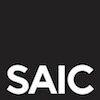
The School of the Art Institute of Chicago (SAIC) provides two paths to study animation—the BFA and MFA in Studio. Housed in the Film, Video, New Media, and Animation Department (FVNMA), the programs feature visiting artists; graduate seminars, screenings, and performances; access to state-of-the-art film, editing, and production equipment; and unlimited admittance to the Art Institute of Chicago Art Museum and on-campus galleries.
All students have access to SIAC’s Gene Siskel Film Center, which regularly showcases student and other films from around the world. In addition, FVNMA MFA students can participate in Critique Week. During the event, the entire faculty, invited artists, and visiting designers form panels to critique student work. Critique Week takes place every semester. All classes are suspended during the event.
The Studio BFA at SAIC has an FVNMA pathway. Students in this program will take courses that cover animation (experimental 2D and 3D), cinema, new media art, and video. Course examples include 3D Character Animation; Sonics and Optics; Media Practices: The Moving Image; Advanced 2D Computer Animation; Real-Time 3D; Motion Graphics and Visual Effects; Puppet Animation; Experimental Technology Lab for 3D Animation; Advanced Drawing for Animation; and Writing and Art Direction for Animation.
The FVNMA Studio Art BFA culminates with the Senior Film/Video Projects Capstone. During this final course, students will complete a professional quality moving image project for public presentation.
The Studio MFA program has an FVNMA pathway. The program, which also supports creative work across 12 different departments, allows students to specialize in one specific area or acquire skills across many different areas of study. MFA students will take many of the same courses as BFA students, along with 3000-level electives, 4000-level art history courses, and a graduate level seminar.
Specialization areas may include Hand-Drawn and Digital 2D and 3D Animation; Moving-Image Installation; Nonfiction/Documentary and Narrative Film and Video; Media Art Histories; and Interactive Art, VR, AR, and Web-Based Projects.
The MFA program culminates with a final project and the SAIC Graduate Thesis Exhibition at the Gene Siskel Film Center. Projects may also be presented at other end-of-year events at SAIC. Each year, more than 200 graduate students present their works to more than 30,000 people at SAIC events.
Graduates of SAIC’s FVNMA Department are prepared to pursue positions in animation, film, games, digital media, and more. SAIC alumni have been hired at places such as Disney, the Whitney Museum, NASA, and YouTube.
Founded in 1866 as the Chicago Academy of Design, the School of the Art Institute of Chicago is one of the nation’s oldest accredited independent schools of art and design. Serving approximately 3,395 students, SAIC provides more than 50 areas of study across 24 academic departments.
The School of the Art Institute of Chicago has been accredited by the Higher Learning Commission (HLC) since 1936. SAIC is also a member of the National Conference of Artists, the College Art Association of America, and the National Art Education Association.

University of Central Florida (UCF) is home to Florida Interactive Entertainment Academy (FIEA). Developed in 2005 in partnership with State of Florida, the City of Orlando and UCF, the academy opened with just 12 students. Today, the academy enrolls more than 130 students annually in its Interactive Entertainment MS program.
Housed in the College of Sciences’ Nichols School of Communication and Media, the FIEA MS program provides access to state-of-the-art facilities such as Studio 500. Launched in 2008, the studio houses a 3,300 square feet motion capture stage, which is one of the largest on the east coast. The studio also houses a 3,500 square feet soundstage. These facilities sit on what is known as UCF Downtown—a 7,000 student campus that focuses on film, games, communication, and interactive media.
Other FIEA benefits include internships and the opportunity to work in production teams mentored by industry professionals. Mentors provide instruction in areas such as 3D animation and modeling, game design, technical art, motion capture, software engineering, and creative collaboration.
The FIEA Interactive Entertainment MS program requires 30 credit hours of study, including 12 credit hours of core courses; nine credit hours in a specialization, such as Art, Production or Programming; a practicum; and a capstone experience. The Capstone results in a large-scale project that will be presented at a special event for the FIEA community and invited guests.
Graduates of the Florida Interactive Entertainment Academy at University of Central Florida are prepared to pursue careers at major studios across the U.S. and abroad. To date, more than 250 companies have hired UCF FIEA graduates. Examples include Google, Electronic Arts (EA), Marvel, Sony, Gameloft, Microsoft Studios, Walt Disney Imagineering, Lockheed Martin, Epic Games, Industrial Light & Magic (ILM), Universal, Riot Games, Zynga, Ubisoft, Apple, DreamWorks, Blizzard Entertainment, Hasbro, Unity, Bungie, Gearbox Software, YouTube, Bethesda Softworks, and Naughty Dog.
The College of Arts and Humanities (CAH) at the University of Central Florida (UCF) has several additional programs for animators. Housed in the CAH School of Visual Arts and Design (SVAD), the Emerging Media program has BFA and MFA options with Character Animation and Experimental Animation tracks (BFA), and an Animation and Visual Effects track (MFA).
Character Animation and Experimental Animation are highly-competitive, portfolio-based tracks that take place in a professional studio environment. Other program benefits include faculty mentors; courses taught by industry professionals; access to state-of-the-art facilities; and internship opportunities.
Course examples for the Character Animation track include Visual Storytelling and Visual Development; Advanced 3D Animation; Digital Production in Artificial Environments; New Imagery in Motion Workshop; 3D Textures; Digital Effects and Compositing; and Character Animation Portfolio Review.
Course examples for the Experimental Animation track include Experimental Animation Workshop; Experimental Animation Professional Practice; Advanced Experimental Animation; and Experimental Animation Portfolio. Students in this track will also complete a BFA thesis project which culminates with an exhibition (screening).
Both BFA tracks allow students to work their way through the production pipeline from idea to post-production. After completing general education and other program requirements, the Emerging Media tracks take two years to complete, full-time.
The Emerging Media MFA with an Animation and Visual Effects track provides the opportunity to create an animation and/or visual effects thesis using traditional hand-drawn techniques, stop motion, 2D animation, and 3D computer animation. Students in this program also benefit from co-directing opportunities and access to state-of-the-art labs and studios. This competitive terminal degree program requires 60 credit hours of study, completed over three years, full-time.
Graduates of the Emerging Media MFA program at UCF will have advanced skills in narrative film structure, independent filmmaking, creative direction, management, and more.
Program alumni are prepared to pursue leadership roles in all areas of animation, filmmaking, and television. Emerging Media MFA graduates are routinely hired at major studios and gaming companies such as Pixar, DreamWorks, Disney, and Electronic Arts (EA). Many graduates go on to launch their own independent studios and freelance businesses.
University of Central Florida was founded in 1963 as Florida Technological University (FTU). Roughly five years later, the school opened with just under 2,000 students. Today, University of Central Florida serves approximately 69,820 students, making it the largest university by enrollment in the state of Florida, and one of the top 10 largest universities in the U.S.
More than 13,130 faculty, adjuncts, and staff members deliver nearly 600 degree programs across 13 colleges and dozens of departments. University of Central Florida is accredited by the Southern Association of Colleges and Schools Commission on Colleges (SACSCOC).

Otis College of Art and Design (Otis) is LA’s first professional school of the arts. The school also employs more than 430 professors who are all active professionals in the fields of art and design.
For students seeking careers in animation, Otis College of Art and Design has a competitive Animation BFA program and a two-year Animation certificate. The BFA is an interdisciplinary, STEM-designated program that provides technical and creative training. In addition to developing advanced skills in 2D and 3D computer animation, 3D production, and visual development, students will master industry software such as Unreal Engine, Toon Boom, Houdini, Maya, Nuke, Cinema 4D, Adobe Suite, and ZBrush.
Core courses for the program explore character design, rendering, mathematics, complex graphics, and modeling. Course examples for the program include Form and Figure; Contemporary Studio and Creative Action; Exploration Into Making: Thought Lab 2; Producing and Production Management; Animation Basics; Art History of Animation; Storytelling Fundamentals; Design and Drawing for Animation; Stop Motion Animation; Advanced Storyboarding; Motion Capture; and Storytelling: Cinematic/Miyazaki.
Each semester, students will apply what they’ve learned to their own studio projects. Key projects include Animation Explorations; Animation Studio Project I and II; and Animation Senior Project I and II. BFA students may also complete a professional internship.
The Animation certificate program is provided through the Otis College of Art and Design Extension Center. Consisting of 16 required courses and two elective courses, the certificate program focuses on animated graphics, character creation, story development, visual effects, and creating environments. Course examples include 2D and 3D Animation I-II; Digital Storytelling; Character Design; Storyboarding for Film and Animation; Color Theory and Design; Digital Tools: Media; and Life Drawing.
Elective examples for the program include Motion Graphics I-II; Video Editing: Adobe Premiere; Cinema 4D; Digital Imagine II: Photoshop; and 3D Digital Modeling I-II.
The Animation certificate program culminates with the Final Portfolio: Digital Media Arts course. Upon completion of this course, students will have a professional-quality portfolio of their best work.
Graduates of the Animation Programs at Otis College of Art and Design are prepared to pursue roles across industries such as entertainment, game design, and advertising. Otis alumni can be found at major companies and studios such as Pixar, Industrial Light & Magic (ILM), Disney, DreamWorks Animation, Nickelodeon, Reel FX, Nike, Apple, Netflix, and Mattel.
Established in 1918, Otis College of Art and Design is a private, non-profit college that serves more than 1,200 students enrolled in eight BFA and two MFA degree programs. Areas of study include Fine Arts, Graphic Design, Public Practice, and Writing. The school also provides more than 150 extension courses, minors, and certificate programs.
Otis College of Art and Design is accredited by the WASC Senior College and University Commission (WSCUC) and the National Association of Schools of Art and Design (NASAD). OTIS is also a member of the Association of Independent Colleges of Art and Design (AICAD) and the Partnership for Academic Leadership on Sustainability (PALS).

University of Texas at Dallas (UT Dallas) is home to the state’s first arts and technology degree. Launched in 2002 and housed in the 50-year-old Harry W. Bass Jr. School of Arts, Humanities, and Technology (Bass School), the program is known as Arts, Technology, and Emerging Communication (ATEC). Today, the program has expanded to include BA, MA, MFA, and PhD degrees.
Across pathways, ATEC students benefit from interactions with guest speakers from major studios such as Pixar, DreamWorks, and Disney; seminars and lectures led by industry professionals; project-based exercises; and applied and experimental research in collaboration with instructors in varying areas of expertise.
For student productions, research, and other projects, the ATEC program provides access to Bass School research labs and creative practice studios such as ArtSciLab; LabSynthE; the Narrative Systems Research Lab; The Studio for Mediating Play; the Creative Automata Lab; Fashioning Circuits; the Cultural Science Lab; the 3D Studio; the Emerging Gizmology Lab; SP&CE Media; and the Public Interactives Research Lab (PIRL).
Students also have access to the ATEC Animation Lab. A major component of the lab is the simulated animated studio experience (SASE). Over two semesters, a crew of 40 SASE students will have the opportunity to design, write, produce, and direct a two-minute CG animated short film. Examples of past productions include Bad Timing (2022), Octo Ninja (2021), Night Shift (2020), and Stargazer (2019).
Within the UT Dallas ATEC program are several options for animators. The BA program has an Animation and Games (A&G) concentration. MA and PhD students may focus their studies in animation, science and technology, games, or other areas. ATEC MFA students may specialize in Animation or Creative Practice. All graduate level programs provide advanced study in computer-based arts, interactive media, technology, digital media, and professional practices.
ATEC coursework for the BA option explores computer animation, game studies, user experience/user interface UX/UI design, motion graphics, and digital fabrication. Course examples include Animation Origins and Techniques; Programming for Digital Artists; Drawing for Animation; Computer Animation; Lighting and Composition; Scripting for Animation; Game Design; Rigging; Level Design; Modeling and Texturing; History of Visual Effects; Animation and Game Fundamentals; and Time-Based Media.
Students will also complete 30 semester credit hours of required electives. Examples include Animation Lab I-II; Virtual Environments; Procedural Animation; Character Design; Motion Capture Animation; Game Production Lab I-II; Stop Motion Animation; Virtual Reality; Animation Studies; Storyboarding; Experimental Animation; Motion Design Lab I-II; Topics in Animation; and Real Time Texturing.
Depending on the program, culminating experiences may include a capstone project, thesis, or research project. Most experiences have an exhibition component.
Graduates of the ATEC programs at UT Dallas are prepared to pursue careers in areas such as 3D computer animation, game design and development, virtual environments, medical and scientific visualization, advertising, modeling and simulation, architecture, publishing, law, education, and training. Program alumni have been hired at companies and studios such as Disney, Blizzard Entertainment, 900lbs of Creative, Cisco Systems, JP Morgan Chase, Texas Instruments, AT&T Foundry, and Gearbox Software.
University of Texas at Dallas began as the Graduate Research Center of the Southwest (GRCSW) in 1961. The owners of Texas Instruments established the center to create better higher-education opportunities in North Texas. Today, UT Dallas is an official member of the University of Texas System, and a Carnegie R1 Doctoral Institution.
The school also serves approximately 29,865 students enrolled in more than 150 degree programs across seven schools. University of Texas at Dallas is accredited by the Southern Association of Colleges and Schools Commission on Colleges (SACSCOC).
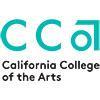
The Animation Department at California College of the Arts (CCA) houses the school’s largest program—the Animation BFA. This STEM-designated program is immersive, interdisciplinary, and project-based, with a strong focus on storytelling. The program also takes place in a hands-on, collaborative learning environment consisting of six state-of-the art studios, shops, and labs; a sound booth; and stop motion suites.
The programs Digital Animation Lab houses a Hybrid Lab for experimental making; a foley room for sound effects and voice-overs; and a sound studio for editing and mixing soundtracks. Students also have access to the Multi-Purpose Suite and Open VR Space.
All CCA studios, shops, and labs are furnished with the latest industry equipment and software. Examples include Dragonframe, Adobe Creative Cloud, TVPaint Animation, and Toon Boom's Harmony and Storyboard Pro; down-shooter cameras for stop-motion animation; drawing light tables; Autodesk software, including Maya and Mudbox; Wacom Cintiq displays for digital drawing; and 27-inch iMac workstations.
In addition to storytelling, the Animation BFA program at California College of the Arts focuses on 2D and 3D animation, stop-motion animation, animation for games, and sound effects. Because the program is interdisciplinary, animation students will develop skills in other creative areas such as acting, fine art, photography, and illustration.
The CCA Animation BFA also requires 48 units of Humanities and Sciences coursework. Course examples for this requirement include Foundation in Critical Studies; History of Animation; Literary and Performing Arts Studies; Introduction to the Modern Arts; and Writing 1 and 2.
Students benefit from courses and workshops led by working professionals in the entertainment industry. CCA faculty are active at major studios such as Pixar, DreamWorks, and Tippett. Course and workshop examples include Animation 1 and 2; Experimental World Building; Stop-Motion Animation; Advanced Visual Storytelling; Sound for Animation; Color and Design Visual Development; Sculpture for Animation; Digital Painting; Acting for Animation; Fabrication for Stop-Motion; Drawing for Animation; Character Design; and 3D Computer Animation 1 and 2.
During the third year of study, Animation BFA students will complete Junior Project 1 and 2. In the final year of the program, students will complete Senior Project 1: Pre-production and Senior Project 2: Production. This culminating experience results in a portfolio of the student’s best work.
CCA Animation alumni are prepared to pursue roles in the film industry, game design and development, advertising, and more. Graduates are routinely hired at major studios such as Cartoon Network, Pixar, DreamWorks Animation, Electronic Arts (EA), Walt Disney Animation Studios, Sony Pictures Animation, Nickelodeon, Phosphor Games, and Bento Box Entertainment. Some program alumni have also gone on to launch their own independent studios and freelance businesses.
California College of the Arts was established in 1907 as the School of the California Guild of Arts and Crafts. On the first day of classes, the school welcomed three teachers and 43 students. Today, CCA enrolls 1,390 students served by 71 full-time and 367 part-time faculty. The school also provides more than 40 undergraduate, graduate, minor, and dual degree options across several departments and divisions.
California College of the Arts is accredited by the WASC Senior College and University Commission (WSCUC), the National Association of Schools of Art and Design (NASAD), and the National Architectural Accrediting Board (NAAB).

San Jose State University (SJSU) has an Animation and Illustration program with three degree options: the BFA in Animation and Illustration (ANI BFA); the Design Studies BA, specializing in Animation and Illustration; and the Master of Design (MDes) with a specialization in Animation. All programs are housed in the College of Humanities and the Arts’ Department of Design.
Across all programs, students have access to state-of-the-art production facilities and studios; immersive courses taught by industry professionals; internships; and study abroad experiences in more than 170 locations. Students also benefit from interactions with guest speakers from major studios such as Industrial Light & Magic (ILM), Pixar, Nickelodeon, Cartoon Network, Disney, Sony Pictures Animation, DreamWorks, Blizzard Entertainment, and Warner Bros. Animation.
The SJSU ANI BFA is a professional degree that explores traditional and 3D animation, storyboarding, visual development, character design, modeling, and physics of motion. Students in this program may specialize in Animation or Visual Development. Specializations are 21 units, including 12 units of approved electives. Course examples across specializations include Digital Animation I-II; Visual Development I-II; Animation Production – Storyboarding; and Digital Modeling I-II.
Students in both specializations will take courses such as Drawing for Animation/Illustration; Visual Storytelling; 2D Animation I-II; Illustration Fundamentals I-III; and Color Principles for Screen Arts. All ANI BFA students must also pass a milestone portfolio review and complete the six-unit capstone Senior Seminar Animation/Illustration.
The SJSU Design Studies BA is a liberal arts degree that requires a specialization. If a student was admitted to the ANI BFA program, but did not pass the portfolio review, they may enroll in the Design BA with a specialization in Animation and Illustration. Even without the specialization, the Design BA provides plenty of opportunities to study animation. Course examples for the program include 2D Animation; Digital Apps: Motion & Interaction Design; Fundamentals of Graphic Visualization; Design Process; Illustration Fundamentals; Visualization I-II; and Sketching, Drawing + Modeling.
The MDes program at San Jose State University is considered the terminal degree in Design and Animation. With a specialization in Animation, the program focuses on current, emerging, and experimental professional practices. The MDes also emphasizes technical courses such as CG Animation; Building Interactivity in Animation and Games; and Lighting and Rendering. Students in this program also benefit from SJSU’s partnership with industry professionals who provide mentoring while students work on perfecting their portfolios and final projects.
In addition to the Department of Design, the College of Humanities and the Arts is home to the Department of Art and Art History. Founded in 1911, the department is one of the oldest contemporary art schools on the west coast. Within the department is a Digital Media Art (DMA) MFA provided in partnership with CADRE (Computer in Art, Design, Research, and Education).
Established in 1985, CADRE is the second oldest education art media lab in the U.S. MIT’s Media Lab is the oldest. CADRE houses the Physical Computing Lab (Art 237) and the Game Development Lab (Art 241) on the San Jose State University campus.
The multidisciplinary DMA MFA allows students to customize their own focus area through 24 units of required electives. This means students can specialize in everything from animation to web development. Other DMA MFA program benefits include exclusive 24/7 access to lab facilities; collaborative art and technology projects; and internship opportunities at major studios in Silicon Valley. Consisting of 60 units of study, the DMA program culminates with the MFA Project, worth three units.
Graduates of the Animation and Illustration, Design Studies, and DMA programs at San Jose State University are prepared to pursue careers in areas such as film and animation, television production, game design and development, advertising, and education.
SJSU alumni have been hired at hundreds of studios, networks, companies, and universities. Just a few examples include Cartoon Network, Lucasfilm Animation, Cisco, Disney Interactive, Nickelodeon, Electronic Arts (EA), Google, the Cogswell Institute, Sony Pictures, UC San Diego, Pixar, Microsoft, Blizzard Entertainment, NBCUniversal Studios, Intel, 20th Century Fox, Zynga, National University of Singapore, and Animation Mentor.
San Jose State University was established in 1857. Known as Silicon Valley’s Public University, the school employs 4,300 faculty and staff that serve more than 36,000 students across nine colleges and dozens of departments and schools. Programs include bachelor’s, master’s, and doctoral degrees in 250 areas of study. San Jose State University is accredited by the Council for Higher Education Accreditation (CHEA).
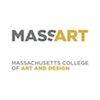
Massachusetts College of Art and Design (MassArt) has a four-year Animation BFA program that focuses on experimentation and innovation. Housed in the school’s Animation Department, the program features courses taught by accomplished faculty; dedicated state-of-the-art labs, classrooms, and production spaces such as digital studios and stop motion stations; campus events such as screenings and exhibitions; collaborative projects; and the opportunity to display works on campus.
Students will begin the MassArt Animation BFA program with the 30-credit Studio Foundation Curriculum (SFC). In addition to taking courses such Studio for Drawing; Thinking, Making, Writing: Using Words with Clarity and Flair; and Visual Language, students will develop projects from start to finish. Critiques, both self and peer, are also part of the SFC, as well as opportunities to exhibit first-year projects at MassArt’s Brant Gallery.
In the second year of the Animation BFA program at MassArt, students will be introduced to animation basics, digital 2D animation, and experimental animation. Students will also take art history, liberal arts, and creative courses. Examples include Human Figure in Illustration; Animation 1: Basics; Life Drawing; Figurative Clay Construction; Introduction to Digital 2D Animation; Media Techniques; Color for Painting; Animation 2: Experiments; and Design for Animators.
In the junior and senior years of the Animation BFA program at MassArt, students will focus primarily on studio electives such as 3DCG Character Animation; Puppet Animation and Fabrication; and Sound Design for Animators. Examples of other advanced coursework includes Animation 3: Communication, and Animation 4: Production. BFA students will also complete an animation portfolio and animation project as the culminating experience for the program.
Graduates of the Animation BFA program at Massachusetts College of Art and Design are prepared to pursue creative roles in industries such as film and animation, digital art, advertising and marketing, and design. Program alumni have also gone on to launch their own studios or freelance businesses.
Founded in 1873, Massachusetts College of Art and Design is the first public, independent college of art and design in the U.S. The school serves approximately 1,940 students enrolled 18 undergraduate programs, nine graduate programs, and a number of minor, certificate, continuing education, and post-baccalaureate study programs. Massachusetts College of Art and Design is accredited by the New England Commission of Higher Education (NECHE) and the National Architectural Accrediting Board (NAAB).

Purdue University (Purdue) houses 10 academic colleges that provide degrees at all levels across all disciplines. Among the school’s 10 colleges is Purdue Polytechnic Institute.
Formally organized in 1964 as the School of Technology and known as Purdue Polytechnic, the institute serves more than 7,000 students at 11 locations across Indiana. With six academic departments, the Polytechnic is the college for Purdue’s Division of Military Science and Technology and its three ROTC (Reserve Officers’ Training Corps) programs on campus.
One of the six departments of Purdue Polytechnic is the Department of Computer Graphics Technology (CGT). Within the department are several paths to study animation. Options include a CGT BS with a major in Animation and Visual Effects (ANFX); the CGT MS; and a Five-Year CGT BS/MS. The CGT MS is part of Purdue’s Computational Interdisciplinary Graduate Program.
Visual Effects at Purdue is a STEM-based discipline, so CGT BS ANFX students will take courses in calculus, physics, and trigonometry. The program also focuses on 3D modeling, computer rendering, digital lighting, video, motion, texturing, character rigging, and audio. Throughout the program, students will have opportunities to create animated films, games, and other productions using industry software such as Autodesk and Maya. Students may also experiment with other types of animation software.
The CGT BS ANFX program requires 120 credit hours, including 39 major course credits, 15 credits of entertainment “selectives,” and 52 credits in other departmental requirements. The required 14 elective credits allow students to focus in different areas of animation, games, VFX, and more. Core course examples for the program include Visual Effects Introduction; Introduction to Computer Animation; Geometric Modeling for Visualization and Communication; Animation Foundations; Sketching for Visualization and Communication; Production for Computer Animation; and Computer Graphics Professional Practices II.
Graduates of Purdue Polytechnic’s CGT BS in Animation and Visual Effects are prepared to pursue positions in the animation and games industries, among others. Some graduates have gone on to work for studios such as Disney and DreamWorks, while others go on to teach, launch their own independent studios or freelance businesses, or apply to the CGT MS program.
The CGT MS at Purdue Polytechnic Institute serves close to 100 students. Primary focus areas include Computer Animation; Information Visualization; Games; and UX Design. This highly flexible, interdisciplinary program provides opportunities to create a customized a plan of study or take coursework across other Purdue graduate programs. Thesis and non-thesis options are available.
The Computer Animation focus for the CGT MS covers the entire digital animation process. The program also explores visual effects, games, and virtual reality. Course examples include Animation History, Technology and Technique; Visual Intelligence and Perception; Current Topics in 3D Animation; Seminar in Computer Graphics Technology; The Art and Technology of Computer Animation; and The Development of Graphics in Technology. Elective requirements allow students to explore other areas of interest.
The culminating experience for the non-thesis CGT MS program at Purdue University is the Animation Capstone (Production). The non-thesis CGT MS culminates with the Animation Thesis Research project. Graduates of the Purdue Polytechnic Institute CGT MS program are prepared to pursue leadership roles across industries. Examples include Animation Director, Lead Technical Artist, Game Developer, Art Director, Senior Simulation and Visualization Specialist, Lead Animator, and Technical Director.
CGT MS program alumni have been hired at companies and studios such as Google, Salesforce, DreamWorks, and Deloitte. Some CGT MS graduates go on to apply for admission to Purdue Polytechnic’s Technology PhD program.
Also housed in the Department of Computer Graphics Technology, the PhD supports study and research in computer animation, game studies, human-computer interaction (HCI), digital enterprise systems, user experience (UX) design, and data visualization. Graduates of the Technology PhD program at Purdue University go on to pursue teaching, research, management, and other leadership roles in industries such as film, technology, advertising, education, science, medicine, government, aviation, aerospace, engineering, information systems, and artificial intelligence (AI).
Purdue University is Indiana’s only land-grant university. Established in 1869, the school serves approximately 60,240 students, making it the second largest university in the state. Approximately 11% of all students at Purdue are enrolled at Purdue Polytechnic Institute. More than 400 programs are provided across 11 academic colleges and schools—including Purdue Polytechnic. The Higher Learning Commission (HLC) accredits Purdue University.

Minneapolis College of Art and Design (MCAD) began as the Minneapolis School of Fine Arts. When it opened, classes commenced in a rented apartment in downtown Minneapolis. Within a few years the school moved on the top floor of the newly built Minneapolis Public Library. Today, MCAD sits on an 11-acre urban campus that houses galleries, media centers, studios, exhibition spaces, a library, fitness center, an art cellar, computer labs, and administrative offices.
Instead of dorms, MCAD provides shared furnished apartments for students. This includes The Web, The Shallows, and The Lodge. Full-time first-year and sophomore undergraduates are required to live on campus.
In addition to a vibrant campus life, Minneapolis College of Art and Design provides several pathways to study animation. At the undergraduate level, the school has an Animation BFA and a minor. At the graduate level, students can earn a Visual Studies MFA.
Students in both degree programs can complete an internship and/or study abroad in places such as the UK, Italy, Germany, and Japan. Across programs, students have completed internships at places such as MTV, Nickelodeon, Walter Art Center, and MASS MoCA.
The MCAD Animation minor explores traditional animation techniques, storytelling, compositing, and pre-production. Students in this 15 credit-hour program will also learn how to use the latest industry software to create animations. All students will take Introduction to Animation. For the remainder of the credits, student may choose from courses such as Drawing for Animators; Storyboard; 3D Animation; Stop-Motion Animation; Character Animation 1; Visual Effects; 2D Digital Animation; Experimental Animation; 3D Modeling; Introduction to Sound; Character Animation 2; and 3D Rendering.
The MCAD Animation BFA is a collaborative program with 2D and 3D tracks. Both tracks require 12 credit hours of study. Consisting of 120 total credits, the BFA allows students to customize an additional focus area (or areas) through 26 credits of required studio electives. Course examples for the program include Introduction to Filmmaking; Experimental Animation; Background Layout for Animators; Virtual Environments; Stop-Motion Animation; 3D Modeling; 2D Digital Animation; Professional Practice; and Character Animation.
The culminating experience for the Animation BFA program at Minneapolis College of Art and Design is the senior project and presentation.
The interdisciplinary Visual Studies MFA allows students to focus in one or more areas of interest. Examples include animation, interactive/digital media, experimental film and video, sound art, web and multimedia, illustration, comic arts, drawing/painting, graphic design, and photography. Students in this 60 credit-hour program also have the opportunity to work one-on-one with a mentor each semester to help reach their goals.
Other program benefits include access to state-of-the art facilities, classrooms, and private studios; participation in events at art centers, galleries, and nonprofits in the Twin Cities; the Master’s Trip to NYC, which features visits to art and design venues, creative agencies, and artist studios; and the option to complete the three-credit Teaching Art and Design online certificate.
Courses for the certificate count towards elective requirements. This allows MFA students to graduate with a terminal degree and a focused certificate. The MCAD MFA program culminates with a thesis and exhibition.
Graduates of the Animation programs at Minneapolis College of Art and Design are prepared to pursue careers in all areas of film and animation, game design, advertising, visualization, and many others. MCAD graduates (and students) have been hired at (or interned with) companies and studios such as Nickelodeon, MTV, Medtronic Inc., Walker Art Center, and Target.
Minneapolis College of Art and Design was established in 1886 by the Minneapolis Society of Fine Arts. The school serves approximately 800 students from 45 states and 15 countries. MCAD programs include 14 undergraduate majors leading to a BFA or BS; three MA degrees; one MFA degree; 11 minors; and seven professional development certificates.
Minneapolis College of Art and Design is accredited by the National Association of Schools of Art and Design (NASAD) and the Higher Learning Commission (HLC). The school is also affiliated with the Association of Independent Colleges of Art and Design (AICAD).

The Herberger Institute for Design and the Arts at Arizona State University (ASU) was created in 2009 after the ASU College of Design and the Katherine K. Herberger College of Fine Arts merged. Today, Herberger employs more than 600 faculty members that serve nearly 9,000 students enrolled in 130 different programs across the School of Art; the School of Arts, Media and Engineering; the Design School; The Sidney Poitier New American Film School; ASU FIDM; and the School of Music, Dance and Theater. The Herberger Institute also houses the ASU Art Museum.
The School of Art and the School of Arts, Media and Engineering provide several paths to study animation. In the School of Art, students can enroll in the Art BFA with a concentration in Animation; the Art MFA; or the 18 credit-hour Animation minor. School of Arts, Media and Engineering students can enroll in the Digital Culture BA program; the interdisciplinary 21 credit hour undergraduate minor; or the 18 credit-hour Digital Culture certificate.
The Digital Culture BA features a variety of courses that allow students to focus in animation. Examples include Introduction to Computer Animation; Experimental Video Art; 2D Computer Animation; 3D Tools; Stop Motion Animation; Introduction to Animation for Film; Animating Virtual Worlds; 3D Computer Imaging and Animation; Fundamentals of Sound Art; and Motion Graphics and Animation. The program culminates with a final project.
Graduates of the Digital Culture BA program at Arizona State University are prepared to pursue roles in areas such as animation and film, video game development, media arts, computing, and graphic communications.
The Art BFA with a concentration in Animation requires 120 credit hours of study. Courses for the program are led by industry professionals with expertise in animation filmmaking, emerging technology, and computer-generated imagery. Course examples include Animation Motion Studies; The Art Experience; Storyboarding and Narrative Sequencing; 3D Computer Imaging and Animation; Illustration; and Junior Animation Projects I-II.
Elective options for the program allow students to gain experience in other areas such as stop motion animation, visual effects (VFX), experimental video art, game art, and screenwriting.
Other Art BFA/Animation program benefits include access to state-of-the-art facilities and resources at the Media and Immersive eXperience (MIX) Center in Mesa, Arizona; internships with local studios, companies, and arts organizations; visiting artist lectures supported by the School of Art galleries, the Ceramics Research Center and Archive, and the ASU Art Museum; and participation in public exhibitions.
The Art BFA program at Arizona State University culminates with the Animation Capstone completed across two courses. The capstone results in an independent short film or a full-length film produced as a team.
The Art MFA program at ASU Herberger provides the opportunity to complete projects in a discipline of the student’s choice. Examples include animation, intermedia, drawing and painting, photography, and printmaking. Other program benefits include workshops; teaching opportunities; visiting artist lectures; and access to private, state-of-the-art studio space at Grant Street Studios.
Located in downtown Phoenix, Grant Street houses several galleries and resources such as printmaking presses, a computer lab and 3D print lab, and a photography darkroom.
The Art MFA program at Arizona State University culminates in a solo thesis exhibition in Step Gallery, Northlight Gallery, or Harry Wood Gallery. All galleries are part of the School of Art.
Graduates of the Art BFA/Animation and MFA programs at Arizona State University are prepared to pursue careers in the creative, technical, and scientific industries, among others. Examples include animation and film, robotics, medical illustration, scientific and data visualization, games and game development, cinema and television, AR/VR, illustration, and fine arts.
ASU Art and Animation alumni hold titles such as Animator, Creative Director, VFX Artist, Graphic Artist, Art Director, and Multimedia Designer.
Founded on March 12, 1885, Arizona State University is the state’s first higher education institution. The school opened its doors on February 8, 1886 as Territorial Normal School (TNS). On the first day of class, TNS welcomed 33 students to a four-classroom building in Tempe, Arizona. Today, ASU sits on 1,550 acres that house multiple campuses, 16 colleges and schools, and ASU Online. Approximately 152,810 students from across the U.S. and nearly 160 other countries have access to more than 800 degree programs.
Arizona State University is accredited by the Higher Learning Commission (HLC). Engineering at ASU is accredited by the Engineering Accreditation Commission of ABET.
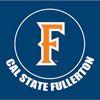
The College of the Arts at California State University, Fullerton (Cal State Fullerton or CSUF) hosts exhibitions, workshops, masterclasses, visiting artists; lectures, and hundreds of concerts and performances each year. The college also houses the Department of Visual Arts, which is accredited by the National Association of Schools of Art and Design (NASAD).
In addition to everything the College of the Arts has to offer, the department features experiential learning opportunities such as internships and external projects; access to the Visual Arts Complex, which houses state-of-the-art animation, painting, drawing, and illustration studios; and partnerships with major studios such as Nickelodeon and Walt Disney. Visual Arts students also have access to eight studio concentrations. This includes Entertainment Art/Animation.
Leading to BFA in Art, this program requires 132 units of study, including 36 in the concentration. Through immersive courses, projects, and other skill-building activities, BFA students will master areas such as storytelling, drawing, and production.
Course examples for the program include Writing in the Visual Arts; Principles of Animation; Special Studies: Storyboarding for Animation; Animal and Wildlife Drawing; Intermediate Character Animation; 3D Animation; Design for Interactive Art; 3D Team Production; Video Art and Moving Image; Special Studies in Entertainment Art/Animation; Elements of Sequential Art; Digital Narrative Illustration; Cartooning and Caricature; Animation Production; and Animation Preproduction.
Studio Art electives allow students to explore other areas such as kinetic sculpture, creative digital photography, printmaking etching, artists’ books, and watercolor.
In addition to a wide selection of course options, the Cal State Fullerton Art BFA program includes independent research, collaborative projects, and internship opportunities at major studios. The culminating experience for the program is the BFA Capstone: Game Art, Animation, and Immersive Media.
Totaling three credits, the experience focuses on career path development and portfolio-building works in animation, game art, virtual production, and immersive media (VR/AR/XR).
Graduates of the Art BFA with an Entertainment Art/Animation concentration are prepared to pursue careers across the animation, film, games, and immersive media industries, among others. Program alumni have been hired at studios such as Disney Feature Animation, Lucasfilm, Electronic Arts (EA), Sony Games, Nickelodeon, Cartoon Network, and Sony Pictures Imageworks. Just a few alumni credits include Spiderman 3, Ice Age 2, SpongeBob Squarepants, Avatar, The Simpsons, Alvin and the Chipmunks, and Superman Returns.
Founded in 1957, California State University, Fullerton is part of the 23 campus California State University (CSU) system. Serving approximately 43,000 students, CSUF provides 110 degree programs across eight academic colleges. California State University, Fullerton is accredited by the WASC Senior College and University Commission (WSCUC).
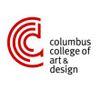
The Animation program at Columbus College of Art and Design (CCAD) was established in 1987. Recognized as a Center of Excellence by Toon Boom, the program focuses on developing advanced skills in the latest animation techniques and tools. Examples include 2D, 3D, Claymation, and stop-motion. The program also explores virtual reality, motion graphics, and digital modeling.
Other program benefits include CCAD Sketch, where students can sketch live animals (in studio) as they play with their trainers; participation in the Animation Student Collective, which features networking opportunities; unlimited access to CCAD’s Cloyd Family Animation Center, which houses flex spaces, the Animation Student Collective, student lounges, and state-of-the-art labs such as stop-motion, virtual reality drawing, computer, and teaching; participation in the 24-Hours Animation Contest for Students; and real-world projects with nonprofit, corporate, and government partners.
Examples of CCAD partners include American Greetings, Odam Publishing, Greater Columbus Film Commission, General Motors, Rela Art, Greater Columbus Arts Council, Nutella, 99P Labs, JP Morgan Chase, Procter & Gamble, Old Navy, Keep Ohio Beautiful, Columbus Zoo and Aquarium, Goodwill Industries, E. & J. Gallo Winery, Cardinal Health, White Castle, Ohio History Connection, and Zox.
Students in the Animation program at CCAD can earn a BFA. An Animation minor is open to Film and Video BFA students. All BFA students will complete the first-year experience, which consists of drawing, technology, design, and business classes. During this time, students will also explore creative processes and performance, conduct research, and collaborate with peers.
Upon completion of the first-year, Animation BFA students may select a concentration or one of 18 minor options. Concentrations require nine credit hours of coursework, while minors require 15 credit hours. Concentration examples include Animation/Game Design; Illustration/Entertainment; Animation/Experimental; Design/Modeling; Design/Drawing; and Illustration/Illustrative Design. Minors that complement the program include Animation 2D or 3D; Illustration; Comics and Narrative Practice; Fine Art; Film and Video; Creative Writing; Advertising and Graphic Design; and Photography.
The CCAD Animation BFA requires 120 credit hours. Course examples include 3D Character Animation Simulation; Visual and Narrative Storyboard; 3D Animation Modeling and Surfacing; Historical Art and Design; Animation Lab Pipeline; Café Sketch; Visual Literacy; Animation Lab Production; and Writing and the Arts.
The Animation BFA program at Columbus College of Art and Design culminates with a final project, portfolio, and presentation. Graduates are prepared to pursue careers in entertainment and other creative industries. Examples of recent employers include Netflix, Sony Pictures Animation, Amazon Studios, Electronic Arts (EA), Cartoon Network, Pixar, Nickelodeon, Titmouse, DreamWorks Animation, Walt Disney Animation Studios, Riot Games, Aardman Animations, Framestore, LAIKA, ZeniMax Media, Illumination Entertainment, Aha Media, PIXEL Park, and AXIS Studios.
Some Animation BFA alumni also go on to open their own independent studios or to enroll in a graduate program, such as CCAD’s Amelita Mirolo MFA in Visual Arts. This 60-credit hour terminal degree program is one of the most competitive programs at CCAD. Each year, the program accepts just 15 students.
The CCAD Visual Arts MFA program operates within a 13,700 square-feet facility that houses individual private graduate studios, exhibition space, faculty offices, and a lounge. In the facility, students can work on individual projects and thesis production in any area of interest. Examples include animation, game art, film, television, interactive design, and illustration. Students may focus in any of these areas through art and design electives and/or CCAD’s numerous minor and concentration options.
Other CCAD Visual Arts MFA highlights include access to the Tad Jeffrey FabLab, which houses 3D printers, one of the largest laser cutters in the state, computer labs, studios, digital printing facilities, darkrooms, and a walk-in spray booth; participation in the visiting artist series, which features seminars, mentoring, workshops, and lectures; and internship opportunities with nonprofits and businesses located in places such as New York, Ireland, Chicago, Seattle, Honduras, and Oregon.
Graduates of the Visual Arts MFA program at Columbus College of Art and Design are prepared to pursue leadership roles in areas such as filmmaking, illustration, advertising, fine art, museums, and education. CCAD Art and Design alumni have been hired at places such as Pixar, Cartoon Network, and American Greetings.
Columbus Art School was established in 1879 by five women who had been prohibited from taking art classes alongside men. When it opened, the school had just six students. Serving more than 1,000 students, Columbus Art School is now known as Columbus College of Art and Design. Students at this private, nonprofit art and design college have access to 11 undergraduate majors, 18 minors, and three graduate programs across more than 10 departments.
Columbus College of Art and Design is accredited by the Higher Learning Commission (HLC) and the National Association of Schools of Art and Design (NASAD). CCAD is also affiliated with the Association of Independent Colleges of Art and Design (AICAD).

The School of Design at Columbia College Chicago houses an Animation and Computer Graphics BA with opportunities to customize a concentration area. Past students have specialized in everything from traditional animation to game art to computer vision for visual effects (CVFX).
Columbia College also lists an Animation BA, Computer Animation BFA, Traditional Animation BFA, and an Animation minor for the 2024-2025 academic year. The minor, which explores the basics of hand-drawn, object, and stop-motion animation, can be taken alone or with any major.
The Animation BA has several options and areas of study including hand drawn animation, cinema visual effects, stop motion animation, computer animation, alternative forms of animation, or a combination of all areas. The Computer Animation BFA is a professional degree with advanced courses in story, critical studies, and CG Animation. The Traditional Animation BFA is also a professional degree that focuses on advanced animation, story, classic art, and critical studies.
Students in all programs may participate in the Animation Studios in LA Program. Activities for this one-credit program include specialized classes, tours, employment screenings, and portfolio reviews. Past participating studios include Nickelodeon, DreamWorks, Cartoon Network, Disney, and Warner Bros.
Columbia animation students also have access to state-of-the-art classrooms and workshops; Cintiq labs, stop-motion labs, and traditional animation camera labs; instructional spaces for stop-motion and traditional animation projects; and the Animation Equipment Center. Other program benefits include the internship program, which provides opportunities to work at local studios, and the study abroad program, which provides access to faculty-led experiences (and others) in more than 20 countries.
Across programs students can expect to take courses such as History of Animation; Storyboarding for Animation; Scriptwriting; Animation Layout; Alternative Strategies in Animation; Animation Maquettes; Environmental Design and Modeling; Digital Animation Techniques Current 2D Trends; Acting for Animators; Drawing for Animation I-II; Digital Animation Techniques: Ink, Paint & Composite; and The Business of Animated Content.
The culminating experience for the programs is the production of an animation portfolio and an animated film to be presented at Manifest—Columbia Colleges annual art festival highlighting graduating students work.
According to the most recent available figures, 98% of Columbia College Animation graduates are employed or pursuing an advanced degree within a year of graduation.
Animation alumni have been hired at major networks and studios such as Pixar, Nickelodeon, DreamWorks, Warner Bros. Animation, Cartoon Network, Disney, Microsoft, and Weta Digital. They have worked on films and series such as Frozen, Pocahontas, The Lion King, Coco, Robot Chicken, Brave, The Lego Batman Movie, and UP.
Program alumni have also gone on to win Oscars and Emmy Awards, while others have launched their own independent studios and freelance businesses.
Columbia College Chicago was established in 1890 as the Columbia School of Oratory. This private, nonprofit college serves nearly 6,700 students from 50 states and more than 60 countries. Programs include more than 60 undergraduate and graduate degrees in all creative disciplines. The school also provides business management and cultural studies programs. The Higher Learning Commission (HLC) accredits Columbia College Chicago.

In 1926, The New School became the first American university to teach the history of film, and one of the first to provide college-level courses in jazz and photography. Courses in the creative arts were taught by the likes of artists such as Frank Lloyd Wright, W. H. Auden, and Martha Graham. Today, The New School is the only university to have a design school (Parsons School of Design), liberal arts college, performing arts college, and graduate programs and colleges under one roof.
Serving approximately 5,755 students, Parsons School of Design is the largest college at The New School. Within the school is a STEM-designated Design and Technology program with BFA and MFA pathways.
The BFA program focuses on storytelling, emerging art, design practices, and interaction. Specialization options include Creative Technology and Game Design. Course examples for this the 120 credit-hour program include Drawing/Imaging; Critical Computation Lab; Objects as History; Space/Materiality; Integrative Studio; History of Design; Core Studio Environments; Time; and Design Studies.
All New School undergraduates must also complete the 30 credit-hour first-year experience (FYE). Students will explore 2D and 3D processes, drawing, and digital design; complete liberal arts studies; and participate in seminars and studios.
The Design and Technology BFA culminates with a thesis project, completed across two courses worth a total of 12 credits.
The Design and Technology MFA at The New School requires 60 credit hours of study. Students in this program have access to studios such as xFab Lecture and Lab; Major Studio; Creative Practice Seminar; and Collaboration Studio. Other program features include immersive classes taught by industry professionals; opportunities to work on projects with external partners such as The Metropolitan Museum of Art (The Met) and One Plus; and creative collaborations with Communication Design, Transdisciplinary Design, and Data Visualization students, among others.
The Design and Technology MFA program at Parsons School of Design culminates with the Thesis Studio, completed across two courses totaling 12 credit hours.
All students may participate in The New School’s internship program, as well as projects with external partners such as Samsung, Google, TheNew York Times, Intel, Panasonic, NYC Media Lab, IBM, Nokia, MIT, and SXSW. In addition, students in all New School programs have the opportunity to interact with and work on projects with professionals at places such as Nickelodeon, Atari, MTV, Apple, The Metropolitan Museum of Art (The Met), UNESCO, Siemens, Eyebeam Art and Technology Center, and OnePlus Technology.
The School of Continuing and Professional Education at The New School has an additional program for animators interested in a flexible, shorter course of study. The Motion Design and Animation certificate consists of just three required courses that explore the production process from start to finish. Courses include Storytelling with Motion Graphics and Animation; Motion Design 1 with After Effects; and Moton Design 2 with After Effects.
The Motion Design and Animation certificate can be taken alone or in combination with the Design and Technology BFA or MFA programs. This 100% online program takes just one year to complete.
Graduates of the BFA, MFA, and certificate programs at The New School are prepared to pursue positions in animation, 2D and 3D animation, game design, advertising, VR/AR, motion graphics, immersion experience design, digital filmmaking, graphic arts, interaction design, television production, mobile and application design, web design, software design, and media art.
The New School was founded in 1919 as the New School for Social Research. Serving approximately 10,815 students today, the school provides close to 130 degree and diploma programs across six colleges and schools. This includes Parsons School of Design; Eugene Lang College of Liberal Arts; the College of Performing Arts; The New School for Social Research; the Schools of Public Engagement; and Parsons Paris.
The New School has been accredited by the Middle States Commission on Higher Education (MSCHE) since 1960. Parsons Paris is declared to the Rectorat de Paris as an établissement d’enseignement supérieur privé (a private higher education establishment) and has maintained its right to operate in France since 2013. This branch campus of The New School is also MSCHE-accredited.
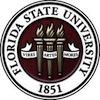
Florida State University (FSU) is home to the College of Motion Picture Arts, which houses the Film School. Within the school is a limited access, Motion Picture Arts BFA program that allows just nine students per class. This collaborative four-year program has an Animation and Digital Arts concentration that includes three full years of immersive animation coursework.
Courses and projects take place in an environment that functions like an industry-standard production studio with 24/7 access. Spaces include an animation and visual effects studio; development rooms; sound stages; post-production facilities; color and sound suites; screening theaters, an equipment room, and director’s prep rooms.
The Film School also provides access to Torchlight Center for Motion Picture Innovation and Entrepreneurship. Home Torchlight Studios and Torchlight Cinematheque, the Center houses a state-of- the-art LED virtual production volume (LED stage), that provides the opportunity for students to learn about virtual production.
Course examples for the Motion Picture Arts/ Animation and Digital Arts BFA program include Character Animation; Reality and Illusion in World Cinema; History and Practice of Visual Effects and Animation; Visualization I-III; Motion Picture Editing; Story Development and Screenwriting; Film Aesthetics; Character Art; Advanced Filmmaking; Lighting, Texturing, and Rendering; Production Management; and Digital Studio Department Leadership.
FSU Animation and Digital Arts students may also take electives such as Marketing and Exhibition; Portfolio Production; and the Professional Internship.
Throughout the Animation and Digital Arts program at FSU, students will complete four major films. This includes the culminating Thesis film. All enrolled students in the College of Motion Picture Arts may also participate in the Torchlight Program, which provides instruction in the financing, marketing, and distribution of films.
Graduates of the Animation and Digital Arts BFA program at Florida State University are prepared to pursue positions in the animation, film, television, games, and advertising industries, among others. Program alumni are Animators, VFX Artists, Riggers, Art Directors, Modelers, CG Lighters, Animation Supervisors, and Storyboard Artists at independent, local, and major studios. Some alumni have also gone on to launch their own studios and freelance businesses.
Founded in 1851 and serving approximately 44,600 students, Florida State University is the oldest continuous site of higher education in Florida and one of the largest universities in the state. With more than 100 campuses, centers, and institutes across the state and around the world, FSU provides close to 300 degree programs across 16 colleges and schools.
Florida State University is accredited by the Southern Association of Colleges and Schools, Commission on Colleges (SACSCOC).

DigiPen has international partnerships with Princess Nourah bint Abdul Rahman University in Riyadh, Kingdom of Saudi Arabia; Keimyung University in South Korea; The One Academy in Kuala Lumpur, Malaysia; and Thammasat University in Thailand. These partnerships help foster the fields of animation, game design, computer science, engineering, and more.
DigiPen is also a Certified Partner of SideFX and the first school in the world to offer a bachelor’s degree in video game programming. SideFX is the Toronto-based company that developed Houdini—the 3D procedural software for film, TV, and game development. Houdini is the preferred software for major studios such as Pixar, DreamWorks, Disney Animation, Sony Pictures Imageworks, Industrial Light & Magic (ILM), DNEG, MPC, and many others.
Other DigiPen features include intensive programs for artists seeking degrees in art, engineering, design, and technology; interdisciplinary team-based projects that last anywhere from a semester to a year; courses taught by accomplished artists who have worked on projects for Lucasfilm and Disney Animation Studio; and the opportunity to study abroad at the DigiPen campuses in Singapore or Spain, or at any partner institute.
Program options for animators include the Digital Art and Animation BFA, and the Digital Arts MFA. The BFA is a competitive program designed for artists looking to enhance their skills. Students will explore areas such as 2D and 3D animation, computer graphics, storytelling, digital sculpting, drawing, and production pipelines. Course examples include Animation I-III; Film History; Introduction to Scripting and Programming; Visual Development for Production; Game History; Storytelling; 3D Digital Art Pipeline; and Cinematic Project I-III.
In the junior year of this 126 credit-hour program, students will create a specialization of their choice from Digital Art and Animation electives, and open electives.
The Digital Art and Animation BFA is available at all DigiPen campuses. The program culminates with a final project and presentation.
The DigiPen Digital Arts MFA is a 60 credit-hour program designed for students with formal training in animation, composition, 3D modeling, color theory, digital painting, and drawing. This means, the program focuses heavily on advanced training in 2D or 3D digital art production.
Course examples for the program include Art Research Methodology; 3D Concepts and Production; Conceptual Design and Illustration; Advanced Character Creation; Organic and Hard Surface Modeling; Art Production Process; Physics for Animation and Modeling; Digital Arts Survey and Analysis; Storyboarding; Character Design; and Management for Art Directors. Free electives and independent study provide opportunities for students to customize a specialization.
The Digital Arts MFA program culminates with the thesis project, completed over two courses. The Thesis Pre-Production course lasts one semester. For the final two semesters of the program, students will work with a faculty advisor to complete the final Thesis Project course. Throughout the program, students will also work in teams to create several animated films, games, live-action films, or other works.
Graduates of the Digital Art and Animation BFA, and the Digital Arts MFA programs at DigiPen are prepared to pursue roles across the entertainment industry, for leadership roles across industries, or to launch their own studios and freelance businesses.
Over the years, DigiPen graduates have earned more than 300 awards and festival selections; they have won approximately 230 awards for game projects and academic papers; and they have helped develop more than 2,000 commercial game titles.
DigiPen alumni have been hired by more than 1,250 companies worldwide. Examples include Electronic Arts (EA), Nintendo, DreamWorks, Sony, Microsoft, Amazon Games, Walt Disney Imagineering, Zynga, Google, Blizzard Entertainment, Warner Bros. Games, ArenaNet, Apple, Riot Games, and Meta.
DigiPen was established in 1988 as a computer simulation and animation company in Vancouver, British Columbia. Today, DigiPen is an institute of technology that serves over 1,000 students across campuses in Redmond, Washington; Singapore; and Bilbao, Spain. Programs include 10 undergraduate and graduate degrees in Computer Science, Digital Art and Animation, Engineering, Game Design and Development, and Music and Audio. DigiPen is accredited by the Accrediting Commission of Career Schools and Colleges (ACCSC).
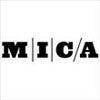
Maryland Institute College of Art (MICA) is accredited by the National Association of Schools of Art and Design (NASAD). The school provides both degree programs and non-credit options for artists of all kinds. Degree programs at MICA require participation in the school’s First Year Experience (FYE). During this exploratory year, students can collaborate; study contemporary art and design practice; and participate in critiques.
The rigorous FYE curriculum also highlights skill-building activities, technology, and 2D, 3D, and 4D media studies. Upon completion of the MICA FYE, students will move on to their chosen major. Animation is one of MICA’s top majors. Students in other majors may minor in Animation. This 15 credit-hour program requires The Principles of Animation and Digital Tools for Animation. Students may select other courses from the following: Storyboarding for Animation; Stop-Motion Animation; Introduction to 3D Animation; and Animation Pre-Production. A final project is also part of the program.
Animation majors will be admitted to MICA’s Animation Department. Leading to a BFA, the 120 credit-hour Animation program requires 90 credit hours in the major. This means, students will spend much of the program studying animation and creating animated works.
Course examples for the program include The Principles of Animation; Digital Tools for Animation; History of Animation; Stop-Motion Animation; Introduction to 3D Animation; 2D Character Animation; 3D Character Rigging; Animation Pre-Production; and 3D Animation Performance.
The MICA Animation BFA program culminates with a year-long capstone/thesis. This may include a film, installation, or interactive media project. Final projects are presented at the MICA Grad Show, which consists of exhibitions and events that highlight final projects for all students across the school’s 14 MA and MFA programs.
Graduates of the Animation BFA program at Maryland Institute College of Art are to pursue roles in areas such as entertainment, games, and advertising. They have been hired at major studios such as DreamWorks, Disney, MTV, and LAIKA. Some MICA alumni have also gone on to launch their own studios or freelance businesses, while others go on to pursue graduate studies at MICA and other top art and design schools.
Maryland Institute College of Art is the oldest independent, continuously degree-granting college of art and design in the U.S. Serving 2,090 students from 45 states and 53 foreign countries, MICA provides more than 20 different art and design programs leading to a BFA, MA, MFA, MBA, MPS degree, or post-baccalaureate certificate. In addition to NASAD-accreditation, Maryland Institute College of Art is accredited by the Middle States Commission on Higher Education (MSCHE).

Clemson University (Clemson) is home to the College of Engineering, Computing and Applied Sciences (CECAS), which houses the School of Computing. Within the school is the Division of Visual Computing and the Digital Production Arts (DPA) program, which provides several paths to study animation. Options include the DPA minor, MFA, and MS.
Launched in 2011, the DPA minor is a partnership between the School of Computing and the Department of Art in the College of Architecture, Arts and Humanities. This 15 credit-hour program explores computer animation; visual effects; graphics production using Maya; animation production; and computer games. The minor is open to all majors. However, it is ideal for students in architecture; visual arts; computer science; computer engineering; and computer information systems.
Courses for the DPA minor vary by major and may include Studio Methods for Digital Production; Advanced 3D Modeling; Technical Foundations of Digital Production I-II; Computer Graphics Images; Advanced Three- Dimensional Modeling; Game Engine Construction; and Special Studio Topics in Digital Production Arts.
For degree-seekers, Digital Production Arts at Clemson University encompasses dozens of disciplines. However, each DPA degree program has its own learning objectives. The curriculum for the DPA MFA blends art and performing arts; psychology; computer science and engineering; philosophy; and graphic communications. Technical electives allow students to develop advanced skills in areas such as game engines, virtual reality (VR), multimedia systems and applications, human computer interaction (HCI), and computation.
Course and elective examples for this 60 credit-hour, terminal degree program include Visual Narrative; Visual Foundations of Digital Production; Special Effects Compositing; Film Genres; Physically Based Animation; 3D Modeling and Animation; Technical Character Animation; Virtual Reality Systems; Improvisation: Interpreting and Developing Texts; Advanced Animation; 2D Game Engine Construction; Digital Production Studio; and Advanced Computer Graphics.
In the Digital Production Studio course, Clemson DPA MFA students will work on a team project from start to finish. This project is worth 12 credits. Students will also complete the Graduate Research Studio course, which consists of a major project or projects under the supervision of a faculty advisor. The culminating experience for the program is the MFA Thesis, completed under the guidance of the student’s advisor and thesis committee.
Graduates of the DPA MFA at Clemson University are prepared to pursue advanced or leadership roles in animation, film, games, video, and television, and many others. Graduates have been hired at major studios such as Walt Disney Animation, Industrial Light & Magic (ILM), Pixar, DreamWorks, Electronic Arts (EA), ReelFX, and Sony Pictures Imageworks.
Established in 2017, the DPA MS program at Clemson University focuses on developing advanced skills in film production, commercial video, and games. The curriculum is very similar to the MFA program curriculum. Course examples include Virtual Reality; Rendering and Shading; Software Construction; Physically Based Visual Effects; Human and Computer Interaction (HCI); Visualization; 2D Game Engine Design; Advanced Computer Graphics; 3D Modeling and Animation; and Computer Graphics.
The six required electives for the program allow students to explore other areas such as audio engineering, advanced drawing, visual narrative, printmaking, photography, and improvisation.
Graduates of the DPA MS program at Clemson University are prepared to pursue technical roles in the broad entertainment industry. Sample job titles include Technical Animator, 3D Graphics Programmer, VFX Animator, Layout Artist, Gameplay Animator, VR Developer, Software Engineer, and Technical Director.
Founded in 1889, Clemson University opened in 1893 as Clemson Agricultural College. On the first day of classes, the college welcomed 446 students. Today, Clemson is a public institution that serves approximately 29,080 students enrolled in more than 80 majors, 90+ minors, and over 130 graduate programs across nine colleges. Clemson University is accredited by the Southern Association of Colleges and Schools Commission on Colleges (SACSCOC).

University of Florida (UF) is home to the College of the Arts (COTA). Established in 1925, COTA houses the fully accredited schools of Music, Dance, and Theater and Dance. Accreditations include National Association of Schools of Art and Design (NASAD); National Association of Schools of Music (NASM); National Association of Schools of Theatre (NAST); and National Association of Schools of Dance (NASD).
COTA also houses the Center for Arts in Medicine and the Digital Worlds Institute. Founded in 2001, the Digital Worlds Institute began as a partnership between COTA and the College of Engineering. Today, the Digital Worlds Institute has expanded to include six additional colleges, with a focus on advanced media systems.
Within the Digital Worlds Institute at University of Florida is the Digital Arts and Sciences BA (BADAS) and the DAS minor. Both programs are ideal for aspiring animators. The 15 credit-hour minor can be added to most UF programs. Students in this option will have the opportunity to work in collaborative teams on animation, game design, experience design, and production projects. Course examples for the program include 2D Digital Animation Techniques; 3D Character Animation; and Digital Storytelling.
The Digital Arts and Sciences BA program explores the 12 principles of animation; industry-standard techniques and tools for interactive games, media, and film; game content creation and system development; and the entire process of pre-production, production, and post-production.
The program takes place in a project-based learning environment, allowing students to gain hands-on experience and team-building skills. Students also can select elective courses from the Institute's offerings in animation, game design, and experience design and production. Other program benefits include high-tech classrooms; access to state-of-the-art studios and facilities; internships at major production studios; and participation in the study abroad program.
Students may also take electives outside of the UF BADAS program. The remaining courses include BADAS core requirements and general education. BADAS core courses explore areas such as 2D and 3D animation; digital technologies; mobile games; digital storytelling; game content creation; design; writing for interactive media; digital visualization; and production.
Course examples include 2D Digital Animation Techniques; 3D Animation Techniques; Digital Storytelling; 3D Character Animation; Advanced Digital Animation Techniques; Advanced 2D Digital Animation Techniques; Motion Design; 3D Modeling and Texturizing; Design and Production Studio I-II; Production of Immersive Environments; Project Methodologies; and Writing for Interactive Media.
The BADAS program at University of Florida culminates with the Senior Project in DAS and Digital Portfolio courses. Graduates are prepared to pursue positions in areas such as animation, game design, filmmaking, television, advertising, science, and technology.
Digital Worlds Institute graduates have been hired at major companies and studios such as Sony Pictures Imageworks, Electronic Arts (EA), DreamWorks Animation, Microsoft, Lockheed Martin, Epic Games, HSN, Sony Music Entertainment, Insomniac Games, the PGA Tour, Trip Advisor, and Hawke Media. Some Digital Worlds alumni have also gone on to launch their own studios or freelance businesses.
University of Florida was founded in 1858 as Gainesville Academy. The school opened with just over 100 students. Today, this public land-grant institution serves approximately 69,465 students across campuses in Gainesville, Jacksonville, and Orlando, Florida. More than 300 programs are provided across 16 colleges and schools. University of Florida is accredited by the Southern Association of Colleges and Schools Commission on Colleges (SACSCOC).

California State University, Long Beach (CSULB or Cal State Long Beach) has a long list of notable alumni. One of the most accomplished is Steven Spielberg. This renowned filmmaker attended CSULB for three years, paused his studies to pursue filmmaking, then returned under a pseudonym 30+ years later to complete his film degree in the College of the Arts (COTA).
More than 3,000 students and over 250 faculty members call COTA home, making it one of largest and most popular colleges at CSULB. With six separate departments including Art; Film and Electronic Arts; Design; Theater Arts; Dance; and the Bob Cole Conservatory of Music, COTA houses state-of-the-art production facilities, studios, and work spaces; five separate, customizable student art galleries; the 1100-seat Richard and Karen Carpenter Performing Arts Center; and University Art Museum.
The College of the Arts also houses dozens of programs leading to a BA, BFA, BS, MA, MFA, Bachelor of Music (BM), Master of Music (MM), and an MFA/MBA. Animators seeking an undergraduate degree typically enroll in the Art BFA program, which has Animation and Pre-production tracks. For students seeking an advanced degree, the COTA Art Department provides an Art MFA with a Studio Art concentration/Animation track.
COTA also has a multidisciplinary Art BA program for students looking for a flexible program that explores a wide range of creative disciplines. With an option in Studio Art, the program requires courses in 2D and 3D Media, and art history. Students have access to courses such as Intro Studio: Animation; Foundation Computer Art; Foundation Life Drawing; Intro Studio: Illustration – Rendering; Foundation Transdisciplinary Practice; and Safety and Sustainable Practices for Studio Artists.
BA students will also take upper division courses from COTA’s Animation, Illustration, Drawing and Painting, and Photography areas, among others. The program culminates with the Art or Art History Capstone course.
The Art BFA/Animation program at CSULB emphasizes storytelling, foundation principles, and experimentation. Students in this 120 credit-hour program will take 82 credit hours of core, major, major support, and track courses. Core course examples include Animation - Practices; Animation - Design 1; Animation - Story Art; Advanced Studio: Animation Filmmaking; Advanced Studio Design 2; and Advanced Studio: Animation 3D CG 1.
Examples of animation track courses include Experimental Animation 1-2; Storyboarding for Film and Television; Special Studies in Animation; Advanced Animation Practices; Advanced Studio: Animation 3D CG 2; and Professional Practices in Illustration/Animation. This course helps students develop their brands, self-promotion, and entrepreneurial skills. Topics include: portfolio and resume development; project management; interviewing and networking; pricing and negotiating; pitching ideas to networks; ethical guidelines; and submitting to film festivals, competitions, and conventions.
The Art BFA/Animation program at Cal State Long Beach culminates with the Animation Senior Film, completed across two courses.
The COTA Art MFA with a Studio Art concentration/Animation track is a 60 credit-hour terminal degree program that requires 21 credit hours in the MFA core, and 39 in the track. Course examples include Graduate Studies: Animation; Graduate Studies: Directed Studio; Graduate Studies: Image as Text; and Graduate Studies: Professional Practices for Visual Communication.
The culminating experience for the COTA Art MFA is the Graduate Studies: MFA Project. This includes the execution and completion of a studio project with members of the student’s Project Committee.
Graduates of the COTA Art BFA and MFA programs at California State University, Long Beach are prepared to pursue careers in the entertainment industry, as well as game design, television, advertising, and publishing among other fields.
CSULB has partnerships with recruiters in animation, games, and media arts. Examples include Walt Disney Animation Studios, Cartoon Network, Pixar, Sony Pictures Animation, Activision Blizzard, Shadow Machine Studio, and KCET Studios. Graduates are routinely hired at these and other places such as MGA Entertainment, Fox, and OPR Communications.
California State University, Long Beach was established in 1949 as Los Angeles-Orange County State College. One of the 23 campuses of the California State University System, CSULB serves approximately 39,965 students enrolled in more than 300 programs across eight colleges. California State University, Long Beach is accredited by the WASC Senior College and University Commission (WSCUC). The University is also an accredited institutional member of the National Association of Schools of Art and Design (NASAD).

University of Colorado Denver (CU Denver) is a public urban research university that encompasses some of the oldest areas in the city. Examples include Tivoli Student Union (housed in a former brewery), and Ninth Street Historic District. CU Denver also houses the College of Arts and Media (CAM), home to the Department of Visual Arts (VA) and the Digital Animation Center (DAC).
Students in the CAM Visual Arts BFA program will learn and create in the DAC, which is a state-of-the-art facility that houses labs, studios, and production areas. This includes include 100 workstations outfitted with the latest industry 3D software including Maya, Houdini, and ZBrush; a large volume Vicon Motion Capture System; and a dedicated render farm with more than 4,300 cores.
Other Visual Art BFA features include internships at major studios such as Pixar, Disney, and NBC Universal; study abroad experiences in places such as the UK, Greece, Italy, France, and South Korea; and access to the CU Denver Comcast Media and Technology Center (CMTC). The CMTC is a partnership between CAM and the College of Engineering and Applied Science (CEAS) that focuses on research and development in everything from artificial intelligence (AI) to the performing arts.
The Visual Art BFA program at University of Colorado Denver also houses a 3D Graphics and Animation emphasis. Course examples for the program include Animation Foundations; Surfacing and Lighting; Advanced Character Animation; Modeling I-II; Introduction to Animation and Rigging; Production Practices; Creating Visual Story; Art History Survey I-II; Digital Cinematography; 3D Design; Dynamic Simulation; International Perspectives Through Animation; and Production I-III.
In the beginning of the third year of the 3D Graphics and Animation program, students will start production on the Senior Film requirement. This 18-month Capstone experience is a collaboration across departments in the College of Arts and Media. Animation students will work in all areas of design and production to create an industry-ready film, which will be screened at the Visual Arts Thesis Exhibition at Redline Contemporary Art Center or other venue.
To date, CAM 3D Graphics and Animation graduates have produced works that have been screened at more than 300 film festivals across 22 countries. Program graduates have also won more than 75 Best Animated Short awards in non-student categories.
CU Denver CAM alumni also work in a variety of roles at major companies and studios across the U.S. Examples include Disney, Nickelodeon, Sony, LucasArts, Pixar, HBO, Industrial Light & Magic (ILM), Google, Apple, AEG Live, Comcast, and Rolling Stone. Some CAM alumni also go on to launch their own independent studios or freelance businesses.
University of Colorado Denver opened in 1912 as an extension of the University of Colorado Boulder. The school became the University of Colorado Denver Center in 1965. In 1973, the UC Denver Center became University of Colorado Denver, making it an independent campus. Today, CU Denver serves more than 15,000 students enrolled in approximately 115 degree programs across seven colleges and schools. University of Colorado Denver is accredited by the Higher Learning Commission (HLC).

College for Creative Studies (CCS) is accredited by the National Association of Schools of Art and Design (NASAD). Founded in 1944, this prestigious organization accredits less than 350 institutions nationwide. In addition to NASAD-accreditation, CCS houses a STEM-designated Entertainment Arts program that has Animation, Game Design, and Concept Design pathways.
A Toon Boom Center for Excellence, the Entertainment Arts program at CCS also features courses taught by Hollywood insiders and Unreal Authorized Instructors (UAI); access to state-of-the-art facilities and equipment including PC and MAC equipment, gaming labs, editing suites, and full VR capabilities with Vive goggles and sensors; and internship opportunities with local and regional studios. Students may also participate in the study abroad program, which features faculty-led and independent experiences in places such as Paris, London, Italy, Ireland, Spain, Sweden, and India.
Leading to a BFA, the Entertainment Arts program begins with the First Year Experience (FYE), which consists of courses such as Animation I; 2D Design Principles; Digital Techniques; Process and Making; Drawing I: Rapid Concept; and Drawing II: Style and Skill.
In the second year of the program, students will begin taking courses in their chosen pathway. Animation course examples include Animation II-III; Experimental Animation; Animation Nuts and Bolts; Introduction to Filmmaking Animation Production; and History of Animation and Digital Media. Animation elective examples include Stop Motion; Sound Design; Computer Character Animation; Playing the Self; and Storyboarding for Film/Animation.
Upper division course examples include Animation Projects I-II; Professional Futures; and Advanced Story Concepts. In the final year of the program, CCS Animation students will complete several required general education electives; Entertainment Arts electives; and Senior Production Studio I-II. The studio culminates with a finished project and portfolio.
Graduates of the Entertainment Arts BFA (Animation) program at College for Creative Studies are prepared to pursue careers in the entertainment, games, advertising, and other industries. Program alumni have been hired at major studios, companies, and networks such as Nickelodeon, Lucasfilm, Disney, Pixar, Cartoon Network, Sony Pictures Imageworks, Marvel, DreamWorks Animation, Blizzard Entertainment, Google, Universal, Titmouse, EA Sports, Warner Bros. Animation, Technicolor Group, Bento Box, ABC Television Group, DC Entertainment, and WildBrain Studios.
College for Creative Studies was established in 1906 as the Detroit Society of Arts and Crafts. Today, this private, nonprofit institution serves more than 1,400 students enrolled in 23 different art and design programs leading to a BFA, MA, or MFA degree. In addition to NASAD accreditation, College for Creative Studies is recognized by the U.S. Department of Education, and the Council for Higher Education Accreditation (CHEA). The Higher Learning Commission (HLC) also accredits CCS.
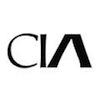
During World War II, Cleveland Institute of Art (CIA) was one of the first schools in the U.S. to provide courses in medical drawing and mapmaking. The schools Joseph McCullough Center for the Visual Arts is a former Ford assembly plant that was built in 1914–1915, and CIA participated in the Works Progress Administration (WPA) Federal Art Project during the Great Depression.
Today, Cleveland Institute of Art houses one of the top repertory movie theaters in the nation, along with a carefully curated collection of art and design programs accredited by the National Association of Schools of Art and Design (NASAD). Among CIA’s programs is an Animation BFA that combines a First-Year Experience (FYE) and liberal arts studies with immersive studio courses in animation.
Other program benefits include work experiences with real clients and community partners such as Ford Motor Company, Hearst Foundations (HearstFDN); Ohio Arts Council, and Cuyahoga Arts and Culture; independent and collaborative projects; field trips to museums and the zoo for inspiration; opportunities to collaborate with students in other CIA departments; and internships with local companies, studios, and cultural institutions such as Cleveland Museum of Art and the Museum of Contemporary Art Cleveland (moCa Cleveland).
CIA Animation students also benefit from mentorships with veteran industry professionals with a combined 600+ feature film, digital production, and television credits. CIA faculty have worked with Walt Disney Animation Studios, Illumination, DreamWorks, Warner Bros., Hasbro, and Sony Pictures Animation.
The Animation BFA program at CIA begins with the FYE. Required courses include 2D Design; Digital I-II; Observational Drawing; Studio Discovery; 3D Design; Life Drawing; and Safety Lab I-II. Liberal arts course examples include Critical Issues in Visual Culture; Themes and Movement in Art Design History; Writing I-III; Contemporary Art, Design and Media; Quantitative Reasoning; and Writing Intensive.
Animation coursework consists of 42 credit hours in cores and an elective. Core course examples include Introduction to 3D Animation; Screenwriting; Narrative Production I-III; Body Mechanics for Animation; Storyboarding and Sequential Art; Drawing for Animation; and Concept Development. Elective options include 3D Texture Mapping and Digital Lighting; and Motion Graphics.
The culminating experience for the CIA Animation BFA program is the Animation Portfolio Reel and Shorts course, and the BFA Thesis and Exhibition.
Graduates of the Animation BFA program at Cleveland Institute of Art are prepared to pursue roles in film and television; game design and development; mobile app animation; medical animation; legal, scientific, or architectural visualization; social media; scientific visualization; and educational animation, among others.
Program alumni can be found at places such as Walt Disney Animation Studios, DC Comics, Electronic Arts (EA), Bethesda Softworks, PBS, and The Wall Street Journal.
Cleveland Institute of Art was chartered as the Western Reserve School of Design for Women in 1882. This independent, not-for-profit college serves approximately 600 students enrolled in 13 entertainment arts, design, fine arts, and craft majors. In addition to NASAD accreditation, Cleveland Institute of Art is accredited by the Higher Learning Commission (HLC).

University of North Carolina School of the Arts (UNCSA) houses the School of Filmmaking and the School of Design and Production. Both schools provide paths to study animation. In the School of Filmmaking, students can earn an Animation BFA. The School of Design and Production houses an Animatronics concentration within the MFA program. Students in both programs will work and learn in a 100,000 square feet of state-of-the-art production space.
The Animation BFA program at University of North Carolina School of the Arts requires 120 credit hours of study including 84 in filmmaking; 30 in general education; and six in liberal arts of designated arts courses. The first year of the program focuses on courses such as Introduction to Animation I-II; Fundamentals of Production Design; Fundamentals of Screenwriting I-II; and Fundamentals of Picture Editing I-II.
At the end of the first year, students will complete a portfolio for entry into the full Animation program. Course examples include Storyboarding I-II; Computer Animation I-II; Computer Graphics I-II; International Animation; Sketching for Communication; Experimental Stop-Motion Animation; Life Drawing Studio; Advanced Computer Animation I-II; and Independent Study.
Third year students will complete a short, three-minute animated project and begin working on fourth-year projects. This culminating experience consists of a five-minute film that will serve as the BFA Thesis.
During the junior or senior year of the Animation BFA program, students also have the opportunity to complete an internship, along with upper-level elective courses to enhance the degree. UNCSA Animation BFA students have interned at major studios such as Cartoon Network, Sony Pictures Imageworks, Prologue Studios, and Stargate Studios.
Graduates are prepared to pursue positions in the entertainment industry, among others. Program alumni have landed full-time positions at Cartoon Network and Prologue Pictures. Some graduates have also gone on to launch their own independent studios and freelance businesses, while others pursue graduate study such as the School of Design and Production’s Animatronics MFA.
Launched in the Fall of 2021, the Animatronics MFA is a hybrid, three-year program that blends electronics and animation. The program emphasizes hands-on, immersive courses that explore the concepts, techniques, and tools used to create animated props and animatronic figures. Courses are supplemented by workshops, seminars, and screenings hosted by professionals in the industry.
Courses examples include Animatronic Programming; Figure Design and Engineering; Animatronic Design; Sculpting and Animatics; Production; 3D Design; and Prototypical Project Management.
The Animatronics MFA program at University of North Carolina School of the Arts culminates with a thesis project. Depending on the focus area, student’s thesis projects will highlight production, research, or a portfolio. Production Thesis students will present their finished work to the public. Research Thesis projects will be completed under the direction of a Thesis Supervisor.
Portfolio Thesis students will participate in the Portfolio Gallery Presentation, which showcases the student’s entire body of work. These fully documented portfolios will also include a Final Thesis Gallery Review. Graduates of the Animatronics MFA program at University of North Carolina School of the Arts go on to land positions at major studios such as Disney, Nickelodeon, ABC, Paramount Pictures, Universal Studios, LF Studios, and Animax.
University of North Carolina School of the Arts is America’s first public arts conservatory. Established in 1963 by the N.C. General Assembly, the school became part of the 17-campus University of North Carolina System in 1972. Today, UNCSA serves nearly 1,400 students enrolled in 40 degree programs across five schools. University of North Carolina School of the Arts is accredited by the Southern Association of Colleges and Schools Commission on Colleges (SACSCOC).
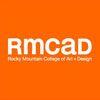
Rocky Mountain College of Art and Design (RMCAD) is accredited by the National Association of Schools of Art and Design (NASAD). The school houses an Animation Department with a collaborative BFA in 2D Animation or 3D Animation. Consisting of 123 credit hours, the program curriculum has a liberal arts component that emphasizes critical awareness, information literacy, and global consciousness.
Both 2D and 3D Animation students will take courses that explore texture mapping; storyboarding; character design; line of action; modeling; and observational drawing. Each option requires 27 credit hours. Designed for students interested in traditional animation, the 2D Animation program requires 21 credits in animation and six studio elective credits. With a focus on computer animation, the 3D Animation program requires 18 credits in animation and nine in studio electives.
Across programs, students will learn the 12 principles of animation and master software such as Adobe Creative Cloud including Photoshop; Toon Boom Harmony; Autodesk Maya; and Storyboard Pro.
Course examples include The Art of Villainy; Digital Painting for Film and Games; Experimental Animation; Character Animation and Motion Studies; Character Rigging; 3D Computer Lighting and Materials; Fundamentals of Animation; 3D Character and Production Design; Creative Visualization; Video Editing and Sound Design for Animation; Scriptwriting for Animation; Tools and Techniques of Contemporary Animation; 2D Computer Animation I-II; Animation Layout and Production; 3D Computer Animation Motion Studies; Stop Motion Animation; World Building; and Special Topics.
At the sophomore, junior, and senior levels, Animation BFA students will participate in intensive portfolio reviews. The culminating experience for the programs is the final project and presentation. Programs can be completed in four years, with year-round online and on-campus courses.
Graduates of the Animation BFA programs at Rocky Mountain College of Art and Design are prepared to pursue roles across the entertainment, games, and advertising industries. Program alumni have been hired at major networks, companies, and studios such as Nickelodeon, Pixar, Industrial Light & Magic (ILM), Cartoon Network, Blizzard Entertainment, LAIKA, Sony Pictures Animation, Walt Disney World, Warner Bros., Microsoft, Epic Games, Adobe, Design Republic, and Pentagram.
Rocky Mountain College of Art and Design opened in 1963 as Rocky Mountain School of Art. Serving more than 1,000 students, RMCAD provides 16 degree and certificate programs in campus/hybrid and online formats. In addition to NASAD accreditation, Rocky Mountain College of Art and Design is accredited by the Higher Learning Commission (HLC).
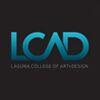
Laguna College of Art and Design (LCAD) provides the unique opportunity to work directly with some of the top animation studios in the world. The school has industry partnerships with studios such as Pixar, Disney, South Park Studios, DreamWorks, Nickelodeon, Industrial Light & Magic (ILM), Cartoon Network, Sony, Warner Bros., Mattel, The Jim Henson Company, Fox, LAIKA, Obsidian Entertainment, and Titmouse.
Other LCAD highlights include access to state-of-the-art production studios; opportunities to participate in the annual LCAD Animation Film Festival (LAFF)—a theatrical exhibition that highlights the best student animated films; interactions with visiting artists; courses taught by industry professionals; and study abroad experiences in places such as Paris.
Laguna College of Art and Design also provides an Animation BFA—the school’s largest academic program. Options within the BFA include the broad Animation program or the focused Experimental Animation program. Programs have a common first-year core in traditional full-animation practices. An Animation minor is also available.
While the five-course minor can be added to any LCAD program, it’s an ideal option for students in the Game Art, Entertainment Design, and Illustration majors. The Animation minor explores principles of both traditional and computer-generated (CG) animation. Courses for the program include Animation 1 and 2; Character Design for Animators 1; Storyboarding 1; and CG Animation 1. History of Animation is strongly recommended for this program, but it is not a requirement.
The LCAD Animation BFA provides instruction and hands-on training in filmmaking (editing, directing, screenwriting, sound design); creating animated characters; working in teams; and pitching stories. The curriculum combines liberal arts and studio courses.
Animation course examples include Storyboarding; Animation 1-2; Background Painting; CG Animation; Visual Development; Character Design for Animators; Layout; Digital Animation Skills; Fundamentals of Maya; Directing for Animators; Dynamic Sketching; Fundamentals of Story; and Animal Drawing. The program culminates with the Senior Capstone and Thesis Defense.
The Experimental Animation BFA program at Laguna College of Art and Design limits class sizes to just 18 students. Hands-on projects and collaboration are emphasized, as well as specializations in Show Design, Storyboarding, and Internet Series Projects.
Course examples for the program include Storyboarding for Limited Animation; Art Direction for TV and New Media; 2D Paperless Animation; Original Series Development; History of Animation; 3D Modeling and Sculpting; Acting for Animators; Story Structure Visuals; Compositing for Animators; Fabrication; and Directing for Limited and Experimental Animation. This 122 credit-hour program culminates with the Senior Capstone and Thesis Defense.
Graduates of the Animation BFA programs at LCAD are prepared to pursue careers in the animation, film, television, and games industries, among others. Program alumni are routinely hired by all LCAD industry partners.
Laguna College of Art and Design opened in 1961 as Laguna Beach School of Art (LBSA). This private art school serves approximately 770 students enrolled in 15 degree programs and nine minors. LCAD has a main campus in Laguna Beach, with educational affiliates around the world including Florence Academy of Arts (Italy), Los Angeles Academy of Figurative Art, and Breda University of Applied Sciences (NHTV) in the Netherlands.
Laguna College of Art and Design is accredited by the WASC Senior College and University Commission (WSCUC) and the National Association of Schools of Art and Design (NASAD).
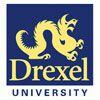
Drexel University has one of the largest cooperative education programs in the U.S. allowing students to gain up to 18 months of work experience in their chosen field—all before graduation. Drexel University also houses one of the nation’s largest media arts and design colleges.
The Antoinette Westphal College of Media Arts and Design provides eighteen undergraduate majors, twenty-six undergraduate minors, and several STEM-designated and accelerated degree programs across the entertainment, visual art, media, design, and performing arts. In addition to the co-op program, which allows undergraduates to spend six months working full-time in the industry, students in all programs benefit from a studio-based curriculum; courses led by industry professionals; and access to state-of-the-art production facilities and studios.
Examples include the 1200 square feet Animation Capture and Effects Lab (ACE-Lab); computer labs outfitted with advanced graphics workstations; screening rooms; and the Immersive Research Lab for augmented reality, virtual reality, and immersive media projects.
The Antoinette Westphal College of Media Arts and Design at Drexel University (Drexel) has several paths to study animation including the Animation and VFX BS; the Digital Media MS; the Dual Animation and VFX BS/Digital Media MS; the Digital Media and Virtual Production BS/Digital Media MS; and the Digital Media PhD. An Animation and VFX minor are also available.
The curriculum for the eight-course, 24 credit-hour minor provides a foundation storytelling, design, and the technology used by 3D animators and VFX artists in the entertainment industry. Through 12 credit hours of electives, minor students may also customize the program. Elective examples include Digital Character Creation; Scripting for Animation and VFX; Technical Directing; and Lighting and Surfacing. Students can take the Animation and VFX minor alone or with just about any Westphal degree program.
The Dual BS/MS programs consist of coursework and projects in animation, interactivity, gaming, 3D modeling, and digital design. The programs also explore digital media history, theory, and methods. Westphal dual BS/MS students can also participate in three co-op experiences in the second, third, and fourth years of study. Positions may be paid or unpaid.
Past co-op positions include animation, technical direction, visual effects (VFX), and 3D production work at places such as Cartoon Network, Pixar, 3FX Medical Animations, Sony Studios, Ingenuity Studios, and FuseFX.
The Animation and VFX BS program provides instruction and hands-on training in 3D modeling, storyboarding, character design, rigging, scripting motion capture, and storytelling. Animation electives allow students to specialize in an area such as VFX, motion capture, character performance, or organic modeling. Course examples for the program include Digital compositing; Computer Programming; Scripting for Animation and Visual Effects; Character Animation; Experimental Animation Lab; History of Modern Design; Organic Modeling; Audio Production and Post; and Spatial Data Capture.
In addition to the co-op program, Animation and VFX BS students can participate in Westphal’s Drexel LA program. During this experience, students will spend an entire summer living and working in LA alongside students in the Screenwriting, Film and Television, and Playwriting programs. Drexel LA students have held internships at Riot Games, BBC Worldwide Productions, Nerdist, and ImageMovers.
The Westphal Drexel Animation and VFX BS program culminates with the Digital Media Senior Project. Students will create works in teams in a simulated real-world production environment. Final projects will be presented during a Thesis Exhibition attended by industry professionals.
The Digital Media MS at Drexel University is a STEM-designated, hybrid program that focuses on research and media applications. Areas explored include animation, gaming and digital media history, interactivity, advanced digital design, and 3D modeling. Course examples for the program include New Media: History, Theory and Methods; Designing for Interactivity; Animation and Game Design Bootcamp; Research Methods for Digital Media; and New Media Project.
Students in the MS program will complete several independent, industry-sponsored, student-created, or faculty-approved projects. Past projects have focused on areas such as animation design, advanced animation production techniques, video games, and narrative comics. This two-year program culminates with a thesis, oral presentation, and demonstration in the Department of Digital Media.
The Digital Media PhD program at Drexel University is a research-driven degree that take place in an experiential learning environment. PhD students may conduct research in entertainment, engineering, business, education, health, or other areas. Past projects have included advanced animation production techniques; theme park ride and animation design; interactive online non-linear narrative comics; multi-touch games for teaching middle-school children; Brain-Computer Interfaces (BCI) for video games; and a multimedia interactive dance performance with body tracking.
Graduates of the Animation/VFX and Digital Media programs at Drexel University are prepared to pursue advanced roles in the entertainment industry, game design and development, television production, advertising, and more. Program alumni have worked on projects such as The Mandalorian, How to Train Your Dragon 2, Ready Player One, and Avengers: Infinity War.
Graduates have also gone on to land positions in research and development in the fields of virtual reality, generative design, and real-time rendering solutions. Program alumni have been hired at places such as DreamWorks, Pixar, XBOX, Disney, NCSoft Corp, and Microsoft.
Drexel University was founded in 1891 by philanthropist and financier Anthony J. Drexel. Known as Drexel Institute of Art, Science and Industry, the school’s first graduating class was just 70 students. Today, Drexel University is an R1 Doctoral University that serves approximately 21,705 students enrolled in more than 200 degree programs across 15 colleges and schools.
Drexel University is accredited by the Middle States Commission on Higher Education (MSCHE). The school’s academic programs in art, design, and media are accredited by the National Association of Schools of Art & Design (NASAD).
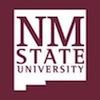
New Mexico State University (NMSU) is a NASA Space Grant College and home to the state’s first Honors College. The school also houses the Creative Media Institute for Film and Digital Arts (CMI). Designed for students seeking intensive training in digital filmmaking, animation, and storytelling, the CMI is a department in NMSU’s College of Arts and Sciences.
Housed in the NMSU College of Arts and Sciences, the CMI features state-of-the-art production facilities including an animation lab, digital projection screening room, production spaces, and post-production labs. The CMI is also home to the Bachelor of Creative Media with an emphasis in Animation and Visual Effects (BCM-ANVE); the Digital Filmmaking BCM; and an 18 credit-hour Animation and Visual Effects minor.
The cross-disciplinary BCM-ANVE is a 120 credit-hour program with two paths including 2D Production, and 3D and Visual Production. The paths have a common core. Courses include Beginning 2D Animation; Foundations of 3D Animation; Storyboarding; Writing for Animation -or- Screenwriting; Digital Illustration Techniques; Principles of Story Across the Media -or- Narrative: Principles of Story Across the Media; Introduction to 3D Modeling; Screenwriting; and History of Animation.
2D Production students will take additional courses such as 2D Compositing and FX; Motion Graphics; Sets and Environments; Advanced 2D Animation; Character Design and Development; and Acting for Animation. 3D and Visual Production students will take courses such as 3D Animation; Visual Effects; Light, Shade, Render; Rigging for 3D Animation; Previsualization; and Motion Capture Techniques.
Students in both options will complete the 3D Production Studio I-II courses, culminating in a short film to be presented in a showcase.
The Digital Filmmaking BCM at New Mexico State University requires 120-123 credit hours of study. This includes 27 elective credits allowing students to specialize in animation. Of the 27 elective credits, 21 are at level 300 and above. This means, students will also develop advanced skills animation and film. Course examples include Visual Effects; Advanced Screenwriting; Sound Design I-II; Digital Video Production I-II; Directing I-II; Directed Studies; Writing for Animation; Practicum; Film Crew I-II; Storyboarding; Pre-Production Management; and Business of Filmmaking/Animation.
In the final year of the Digital Filmmaking BCM program at New Mexico State University, students will complete FDMA 497: Portfolio Design and Development. During this course, students will focus on marketing strategies, building their portfolios and resumes, and developing individual demo and promotion packages.
All BCM students are eligible to enter their films or animated productions into the Las Cruces International Film Festival. Entry is free for NMSU students.
NMSU CMI graduates are prepared to pursue careers in entertainment, television production, advertising, and more. Across programs, NMSU students have interned with, completed co-op experiences with, or been hired at companies, studios, and organizations such as Disney, Amazon, NASA, IBM, Rolls-Royce, Tyson Foods, GEICO, the City of Las Cruses, Lockheed Martin, and Cummins, Inc.
Founded in 1888 as Las Cruces College, New Mexico State University is a system of five colleges that serves approximately 22,710 students. Las Cruces serves approximately 15,410 students, making it the largest campus in the NMSU system. More than 100 programs are provided across seven colleges and the graduate school. New Mexico State University is accredited by the Higher Learning Commission (HLC).

The Kansas City Art Institute (KCAI) campus is a garden-like setting located just steps away from Kemper Museum of Contemporary Art and Nelson-Atkins Museum of Art. The school also houses the KCAI gallery—a contemporary art museum which hosts public screenings, exhibitions, readings, and lectures; a state-of-the-art production studio outfitted with the latest tools and equipment; the KCAI media center; 3,000 square feet auxiliary woodworking studio; and several other studios and resources for students and the school’s 75 faculty members.
Kansas City Art Institute also houses an Animation BFA program; the Animation/Art History BFA; and Animation/Creative Writing BFA. Double majors require 135 credits. The Animation BFA requires 120 credits, and all programs begin with the school’s First Year Foundation (FYF).
This immersive experience takes place in a 20,000 square feet space featuring, workshops, seminars, classes, faculty meets, presentations by international speakers, and intensive studios. Students may customize workshops to support their interests. At the end of the First Year Foundation, students will have a completed project to display alongside other FYF works.
In the second year of the KCAI Animation BFA program, students will take courses such as History of Animation: Origins; Sophomore Studio; Principles of Animation; Digital Methods; Contemporary Animation History; Visual Communication; and Sophomore Studio: Animators Toolbox.
In year three, students will take courses such as History of Animation Since 1960; Junior: Ideas in Motion; and Junior Studio: Explorations in Animation.
The program also requires 39 credit hours of liberal arts requirements and 15 credit hours of electives. Examples include Intro to Toon Boom Harmony; The Art of Stop Motion Puppetry; Motion Graphics: History and Practice; Narrative Storytelling: Documentary; Real-Time Animation; Live Action for Animation; Writing for Animation; Action for Animators; and Animation as Political Protest.
In the final year of the KCAI Animation BFA program, students will complete the Professional Practice course and Senior Studio: Graduation Animation 1 and 2. The Professional Practice course allows students to interact and network with visiting artists and industry professionals. The two six-credit Senior Studios provide the opportunity to produce an animated work. In the last year of the program, students will also have the chance to complete an internship at a local studio.
Double major students will complete all required animation courses and the final animated project. Animation/Art History students will also take courses such as Contemporary Art; Global/Comparative Art; Modern Art; Art History Seminar; Renaissance Art; Baroque Art; Medieval Art; Ancient Art; and Art Historical Studies I-II.
Animation/Creative Writing BFA students will complete additional courses such as Writing Seminar; Critical Studies; Creative Writing Workshop; Literature; Philosophy; and Art Historical Studies I-II.
Graduates of the Kansas City Art Institute Animation BFA and double major programs are prepared to pursue creative roles in areas such as animation, film, television, game design, advertising, and publishing. Program alumni have been hired at major networks and studios such as Disney, Nickelodeon, Digital Domain, Warner Bros., Netflix, Titmouse, and Hallmark.
Some KCAI BFA graduates also go on to pursue advanced degrees at major Universities and art schools such as California Institute of the Arts (Cal Arts), University of California Los Angeles (UCLA), School of Visual Art New York (SVA NY), and University of Missouri Kansas City (UMKC).
Kansas City Art Institute was established in 1885 as a Sketch Club. Today, this private four-year art and design school serves approximately 700 students enrolled in 13 majors leading to a BFA. KCAI is an accredited institutional member of the National Association of Schools of Art and Design (NASAD) and the Association of Independent Colleges of Art and Design (AICAD). The school is also accredited by the Higher Learning Commission (HLC).
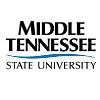
Middle Tennessee State University (MTSU) is the largest producer of graduates in the Greater Nashville area and home to the Charlie and Hazel Daniels Veterans and Military Family Center—one the largest facilities of its kind on a college campus. MTSU is also home to the College of Media and Entertainment (CME). With a focus on news, storytelling, and entertainment, the CME is the only college of its kind.
Within the college is the Department of Media Arts—home to the Animation BS and 18 credit-hour minor. Accredited by the National Association of Schools of Art and Design (NASAD), both programs provide access to the 80,000 square feet John Bragg Media and Entertainment Building, which houses animation and graphics computer labs; radio, television, and recording production facilities; and the Center for Innovation in Media.
The Department of Media Arts provides access to additional facilities such as a 40-foot Mobile Production Lab; five different studios; and numerous other labs. And with its own varsity team for live video production, the department provides plenty of opportunities for real-world, hands-on experiences and opportunities to work with virtual and augmented reality (VR/AR); 360-degree video production; and 3D projection mapping.
All MTSU Animation students have the opportunity to complete an internship in the recently launched MT IMAGINE Animation Studio, which produces high-end animated visuals for clients on a budget. Housed in the College of Media and Entertainment, the studio’s project-based, paid internships allow faculty, students, and even recent graduates to create content for real-world clients. Projects span the 2D and 3D animation, XR virtual production, and VR/AR fields.
Another component of the MTSU Animation program is the chance to volunteer at the annual SIGGRAPH conference. In 2023, 19 MTSU Animation students were accepted as volunteers and one was accepted as a team leader. These artists were among the nearly 300 students selected from over 100 universities worldwide for this coveted program.
The Animation BS is a 120 credit-hour program, including 76 credit hours in the major. Beginning in the first semester, students will explore traditional animation techniques through hands-on project opportunities. Students will gradually advance into coursework that covers advanced digital tools and techniques.
Course examples for the program include: Introduction to Media and Entertainment; Scripts for Media; 2D Animation I-II; Texturing, Lighting, and Rendering; Motion Graphics I-II; Visual Effects; Animation and Performance; Character Modeling and Rigging; Animation Mechanics; History of Animation; Art Appreciation; Film History; Animation Preproduction; and Professional Practices in Animation.
The MTSU Animation BS program culminates with the Animation Capstone, completed across two courses. The capstone consists of an original animated short that will be submitted to film and animation festivals around the world. This project will be centerpiece of the student’s final portfolio.
Graduates are prepared to pursue careers in entertainment (film, animation, television), game design and development, medical visualization, forensic recreation animation, AR/VR, advertising, publishing, architecture, education, and research. Program alumni have been hired at studios such as DreamWorks Animation, Sony Pictures Imageworks, Industrial Light & Magic (ILM), Blizzard Entertainment, Digital Domain, Cinesite, Pixel Magic, Titmouse, Pixomondo, WB Games, Tippett Studio, and Reel FX.
Middle Tennessee State University was established in 1909 as Middle Tennessee State Normal School. The school launched with a two-year training program for teachers. On September 11, 1911, the Normal School opened with 125 students. Today, MTSU serves more than 20,000 students enrolled in over 300 majors and concentrations across nine colleges. Middle Tennessee State University is accredited by the Southern Association of Colleges and Schools Commission on Colleges (SACSCOC).
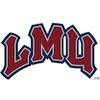
Loyola Marymount University (LMU) focuses on providing real-world experience in a faith-based academic environment. With views of the Pacific Ocean and the Hollywood sign, LMU is also a leader in creative fields such as film and television.
The School of Film and Television (SFTV) at Loyola Marymount University is home to the first program to build a motion-capture lab with courses in virtual cinematography and pre-visualization. Known as the Walter and Grace Lantz Undergraduate Animation Program, this pioneering course of study leads to a BA or a minor.
With small class sizes that provide high student-faculty interaction, both options provide access to state-of-the-art facilities such as a 4,000 square feet premiere studio designed by Gensler; nearly a dozen smart classrooms; a 28-seat FTV screening room; a render farm with 30 nodes of rendering animation frames; and the Student Production Office (SPO), which assists students with completing individual projects.
SFTV Animation BA students also have opportunities to complete an internship with one of more than 400 partner companies and studios. Examples include Disney, Nickelodeon, HBO, DreamWorks, and Netflix. Internships are also available to BA students through LMU’s study abroad program. With more than 100 locations, experiences are also immersive, and either faculty-led, service-learning based, or research-based. Location examples include Paris, Beijing, London, Amsterdam, Kyoto, Budapest, and Seoul.
Students in both programs will explore television, film, game design, and other media forms while gaining hands-on experience in storytelling, 3D filmmaking, stop-motion, visual effects (VFX), and motion-capture. Animation minor students will complete 18 credit hours including Discovering Animation; Visual Story Development; and Introduction to 3D Computer Animation, Introduction to Interactive Animation, or History of Animation. The remaining courses will come from 300 and 400 level animation electives selected under the direction of the Chairperson.
Students in the LMU SFTV Animation BA program will complete 120-130 credit hours of study across eight semesters (four years). The required 24+ credit hours of electives allow students to select a focus area. Students can also add the minor in Interactive, Gaming, and Immersive Media (IGI).
Course examples for the Animation BA program include Discovering Animation; Digital Toolbox; Introduction to 3D Computer Animation; History of Animation; Intermediate Animation Workshop; Visual Story Development; Figure Drawing Workshop; Art of Screen Media; Rhetorical Arts; and Animation Practicum.
The IGI minor is a collaboration between the Frank R. Seaver College of Science and Engineering, and SFTV. Courses for the program focus on interactive and immersive gaming; programming, design, and analysis; world building; and writing. Led by the Animation Chair, the program requires 21-22 credit hours selected from the Seaver College and the SFTV. Course examples include Introduction to Interactive Animation; Computer Programming and Lab; Game Design; Advanced Interactive Animation; Video Game Writing; Game Development; VR Studio; and Analysis of Video Games.
Also housed in the Seaver College is the Computer Science BS (CS BS) with a Games and Interactive Computer Science (GICS) track. The curriculum for this program can be supplemented with several animation courses and one physics course.
The LMU Animation BA culminates with the Senior Thesis Project/Production course worth three credit hours. Students in the IGI minor and the Computer Science BS with a Games and Interactive Computer Science track will also have the option to complete a final project.
Graduates of Animation and CS/GICS programs at Loyola Marymount University are prepared to pursue positions in fields such as animation, film, and television; forensic animation; game design and development; animation for science and medicine; advertising and marketing; and art education.
To date, more than 400 employers have hired LMU SFTV alumni. More than 80% of alumni are working in the field and more than 10% go on to enroll in a graduate studies program.
Animation program alumni have created successful animated series such as Johnny Bravo (1997- 2004, Cartoon Network) and they have worked on other major productions and series such as Superman: Doomsday; The Simpsons; Green Lantern: First Flight; Wonder Woman; and The Simpsons Movie.
LMU SFTV alumni have also been hired at major companies, networks, and studios such as Sony Pictures Animation, Nickelodeon, Viacom, Paramount, Sony Playstation, Walt Disney Animation, Cartoon Network, Warner Bros., Amazon Studios, Disney/ABC, Random House Studios, DreamWorks, NBCUniversal, BET Networks, HBO, 21st Century Fox (founded by Rupert Murdoch), E! Entertainment, and Netflix.
Established in 1911, Loyola Marymount University is a private Catholic University and National University/High Research Activity (R2) institution. Serving approximately 9,150 students across two campuses in Los Angeles and one in Playa Vista, California, LMU is also the largest Catholic university on the West Coast. The school provides nearly 180 programs across seven colleges and schools. Loyola Marymount University is accredited by the WASC Senior College and University Commission (WSCUC).